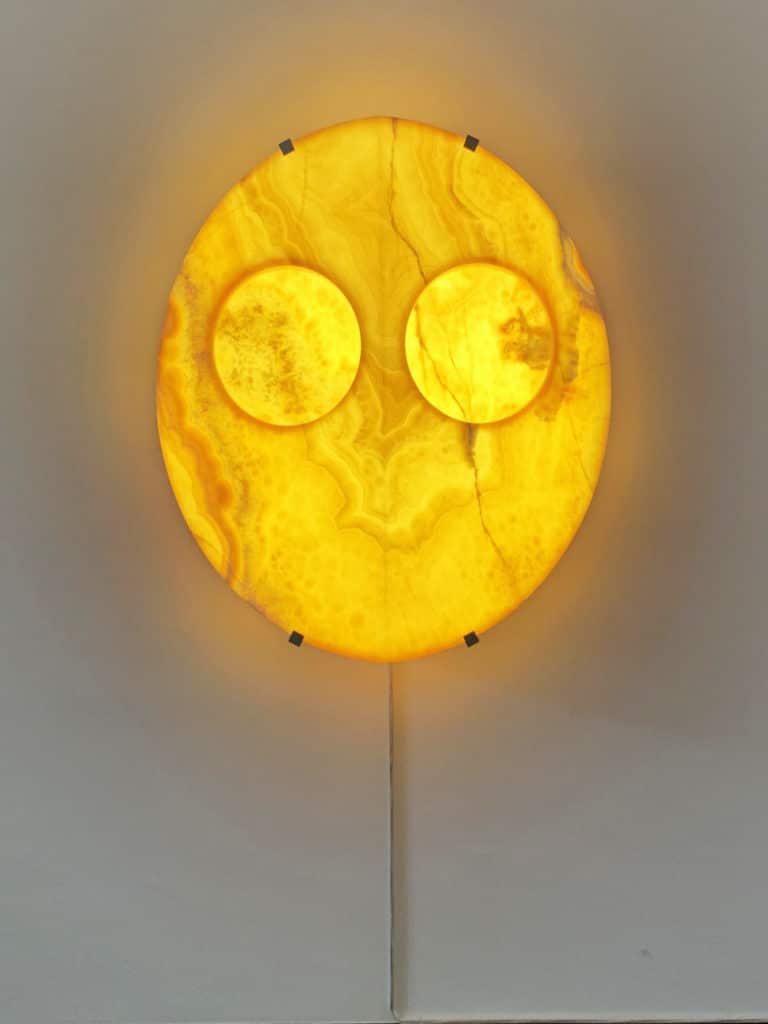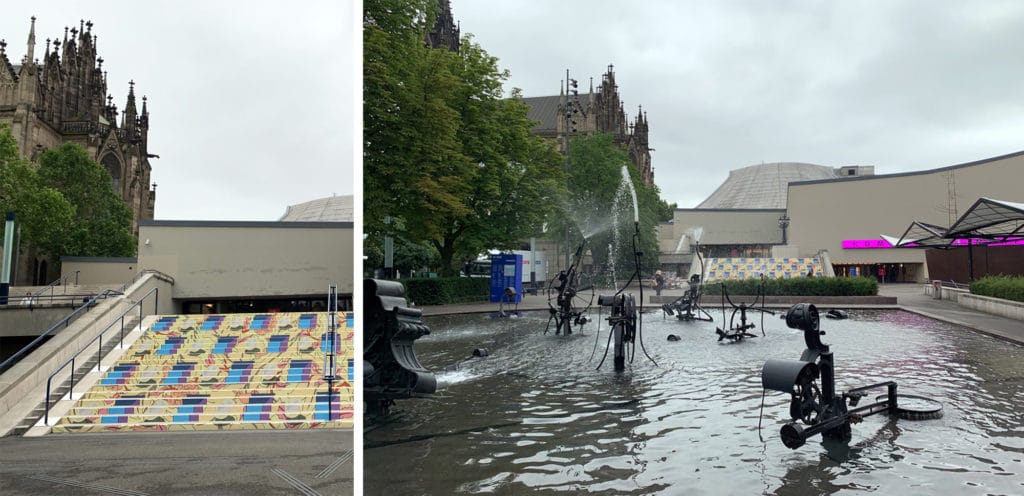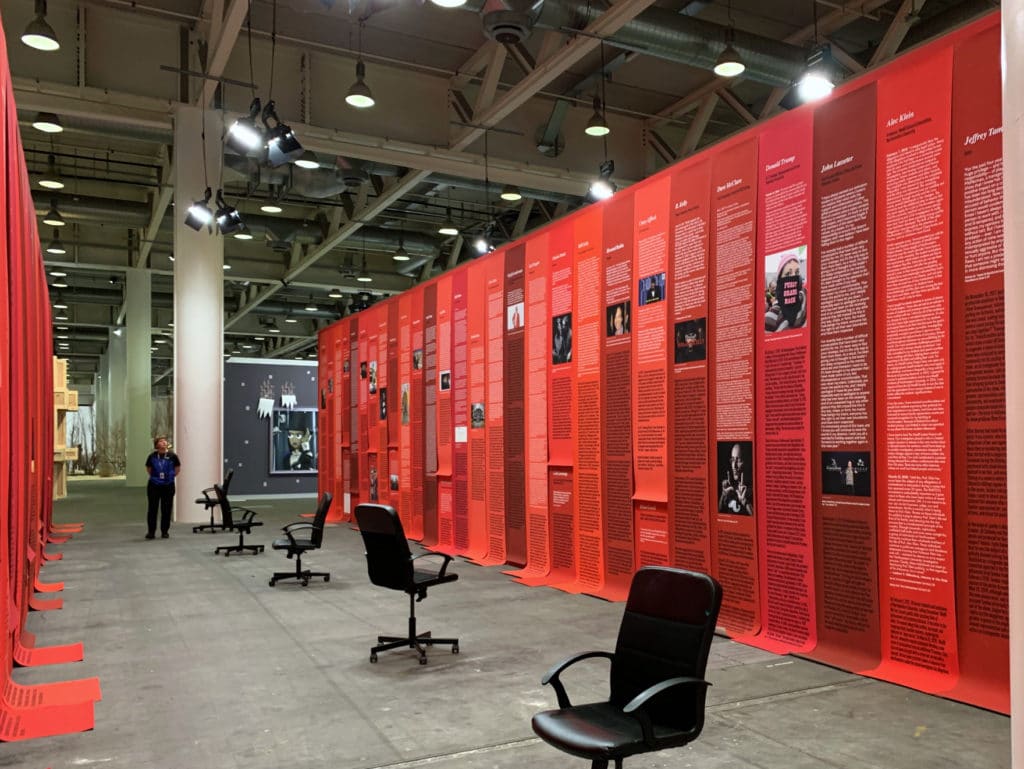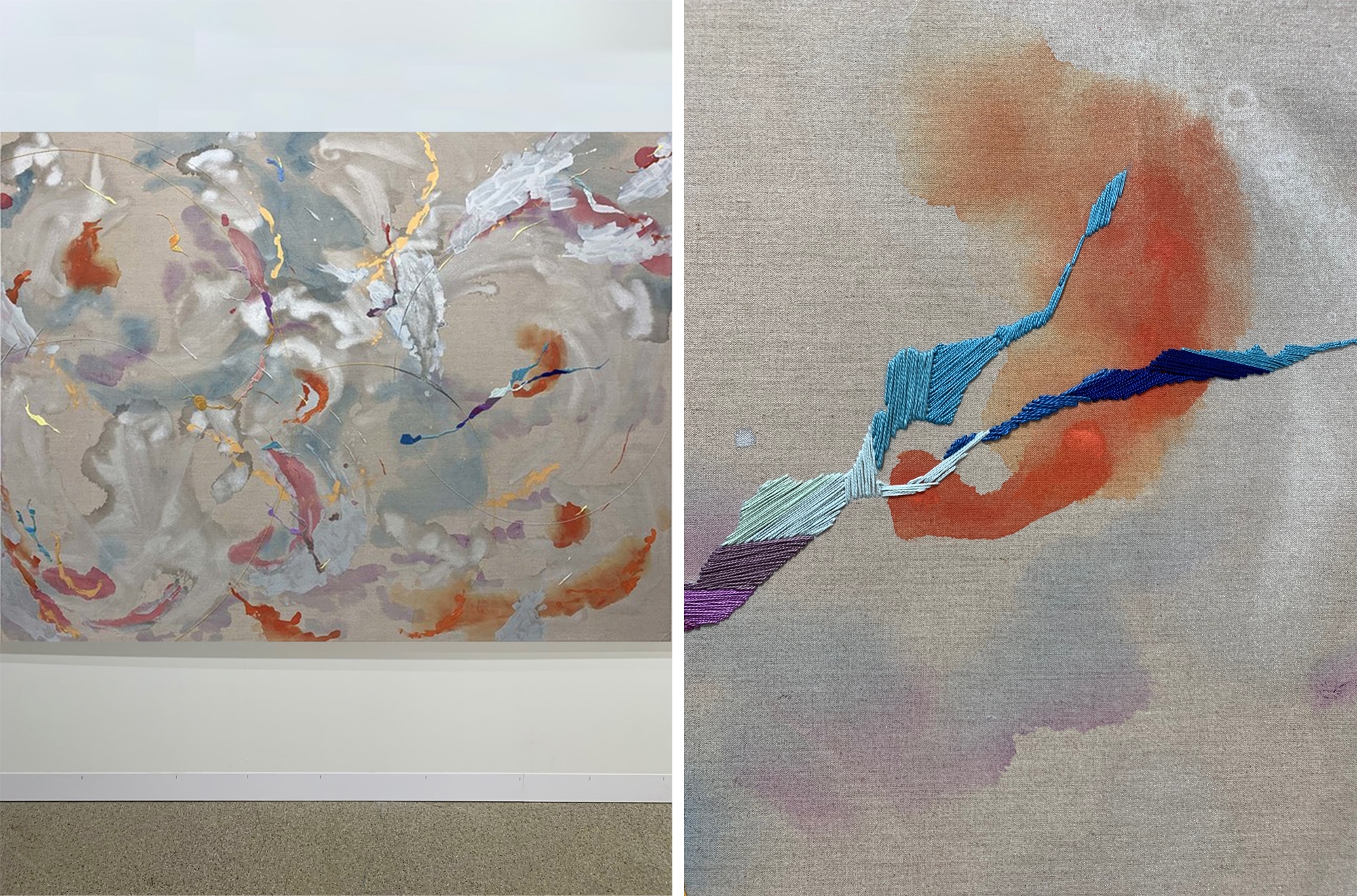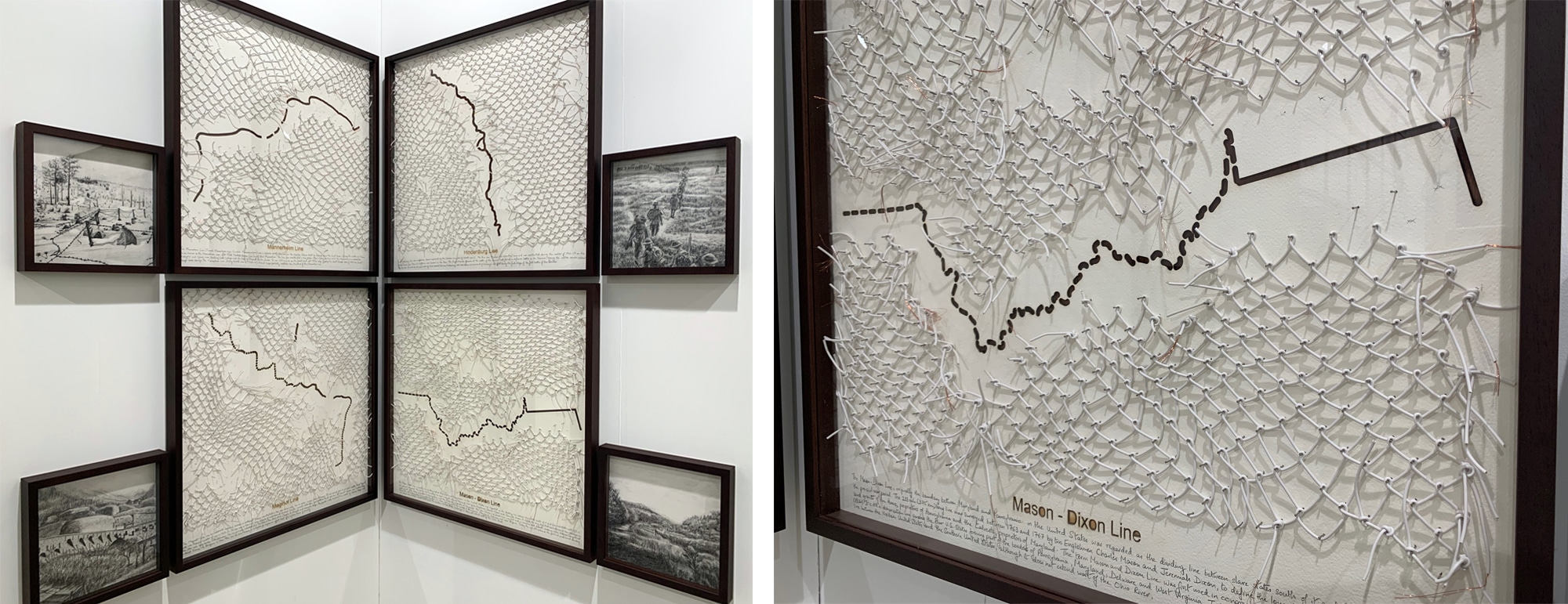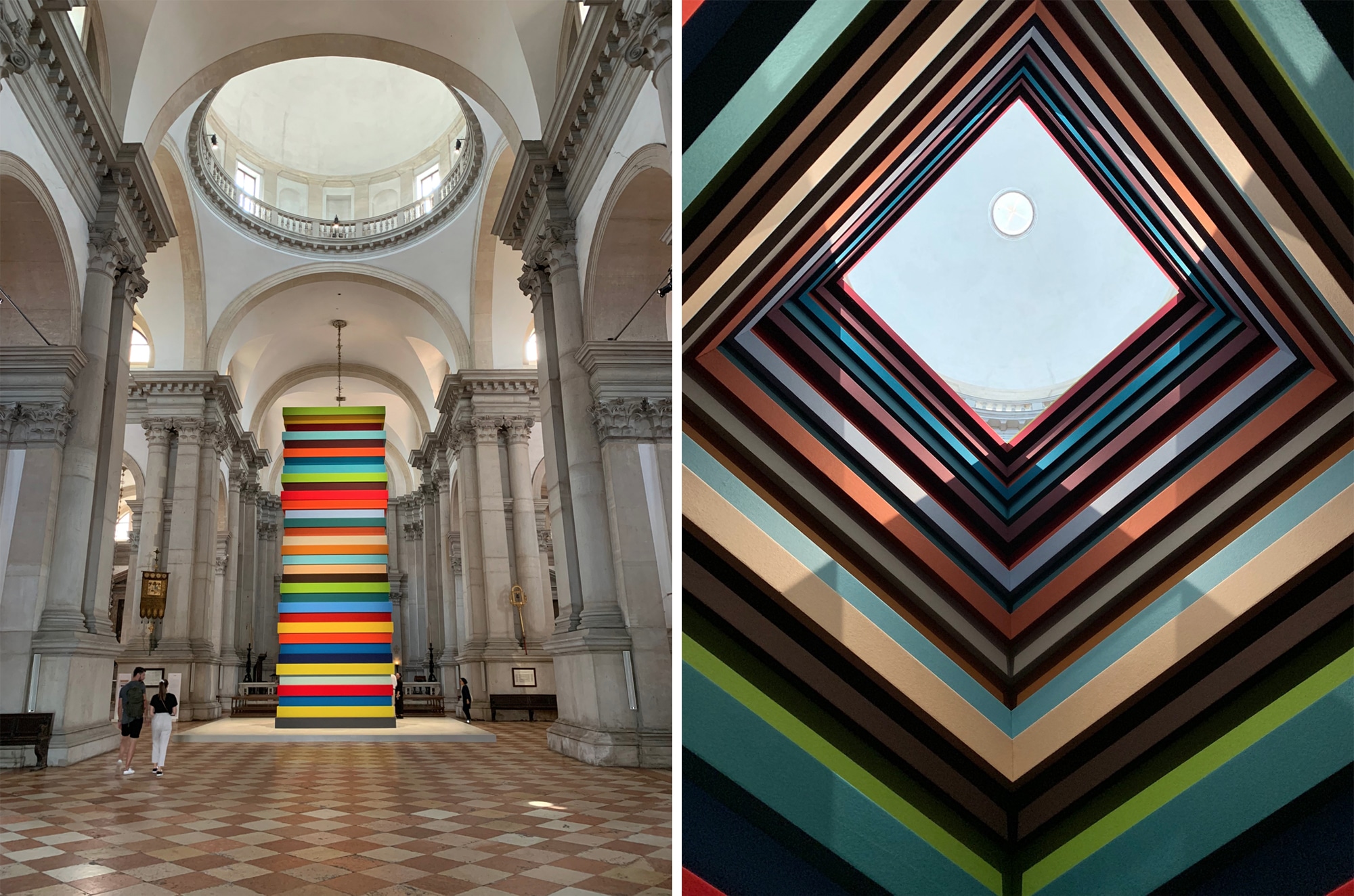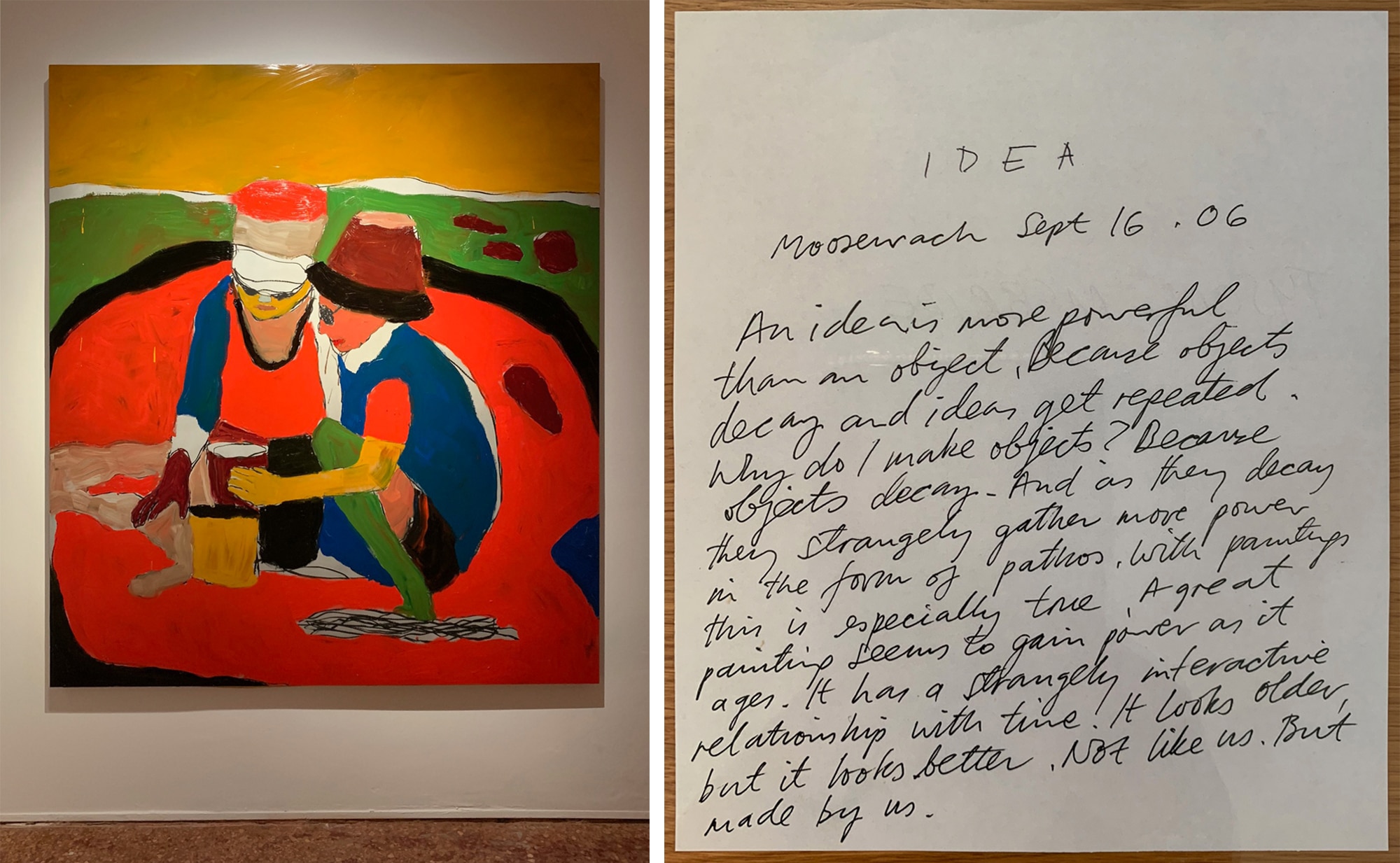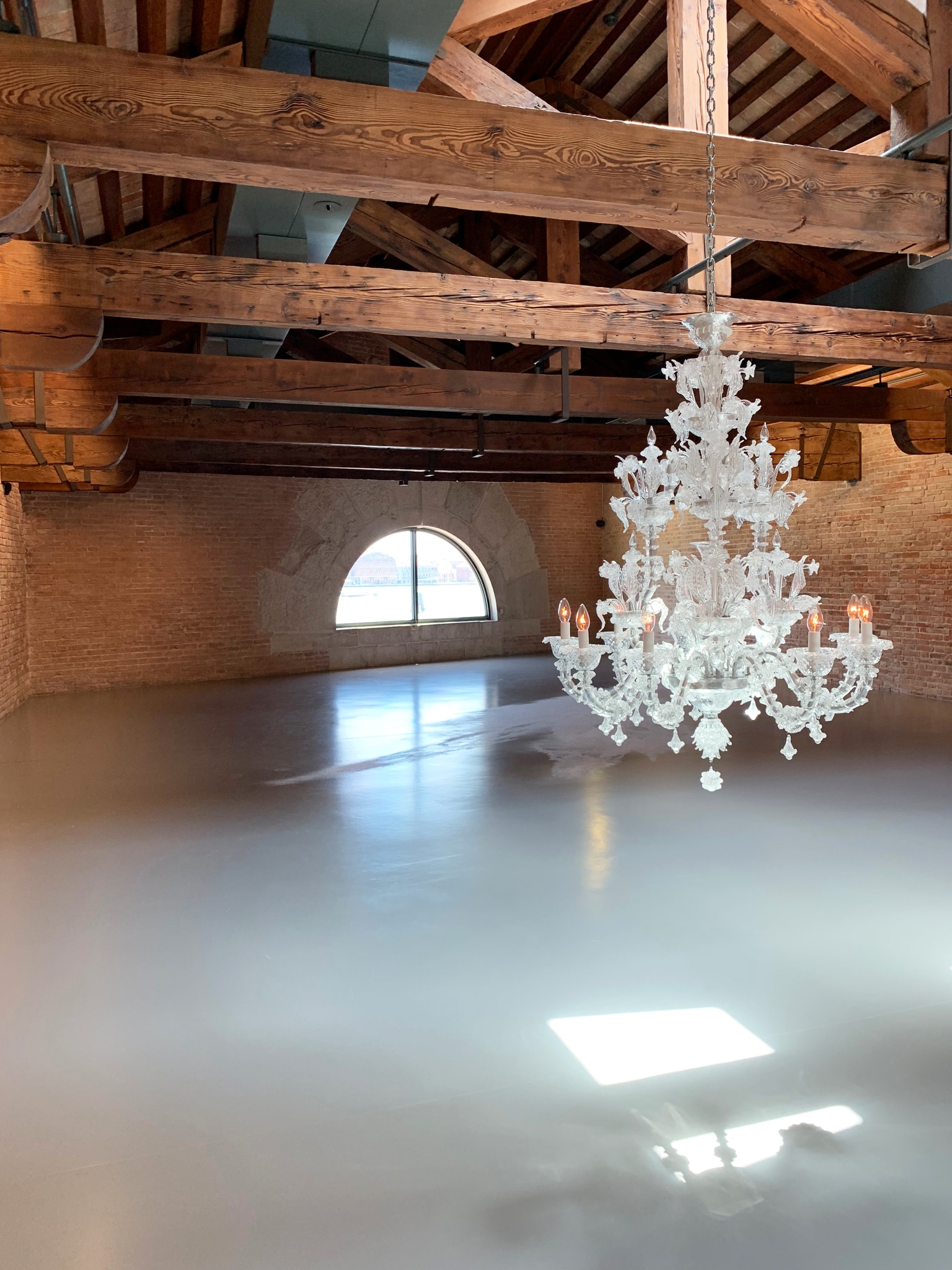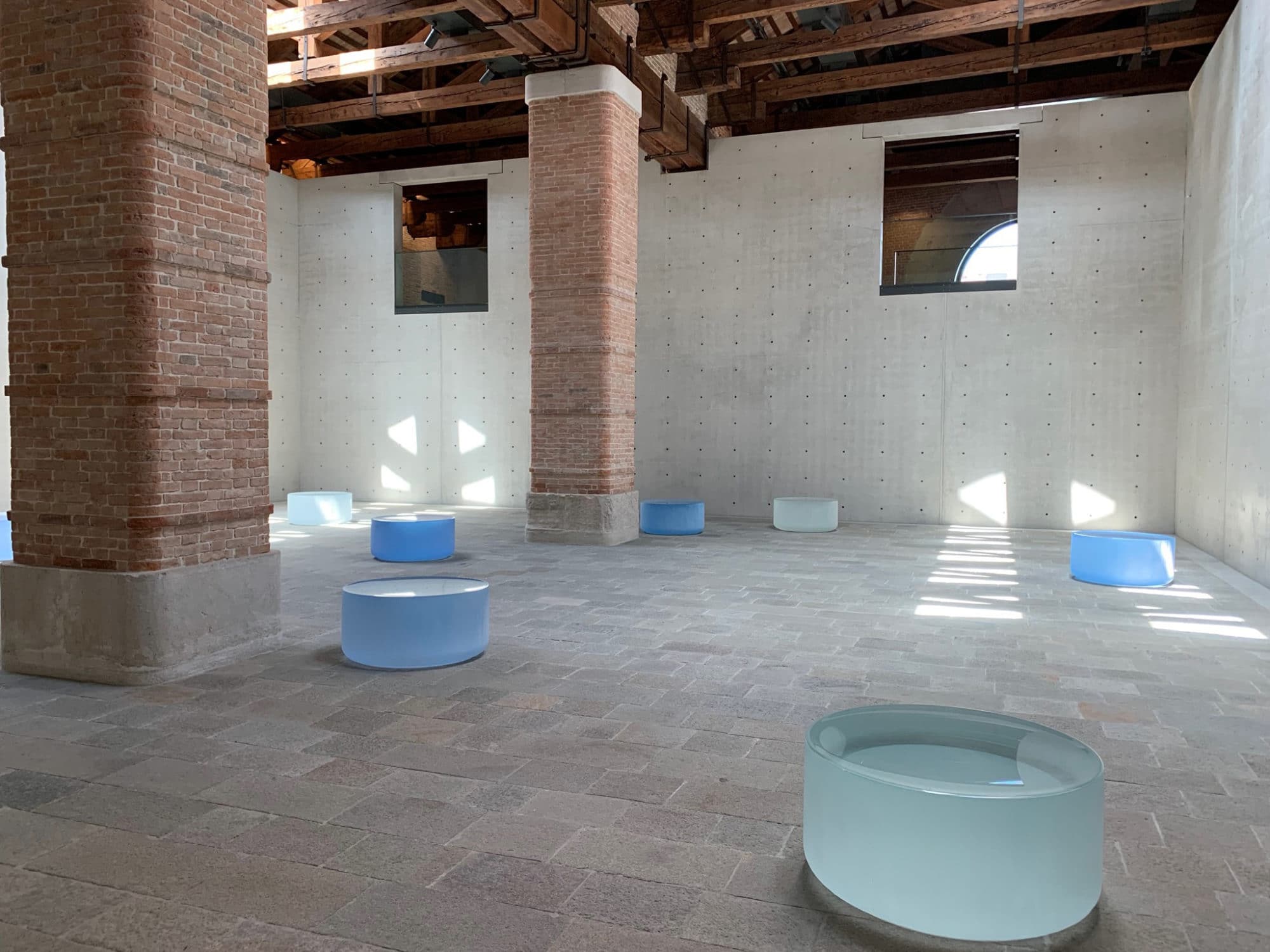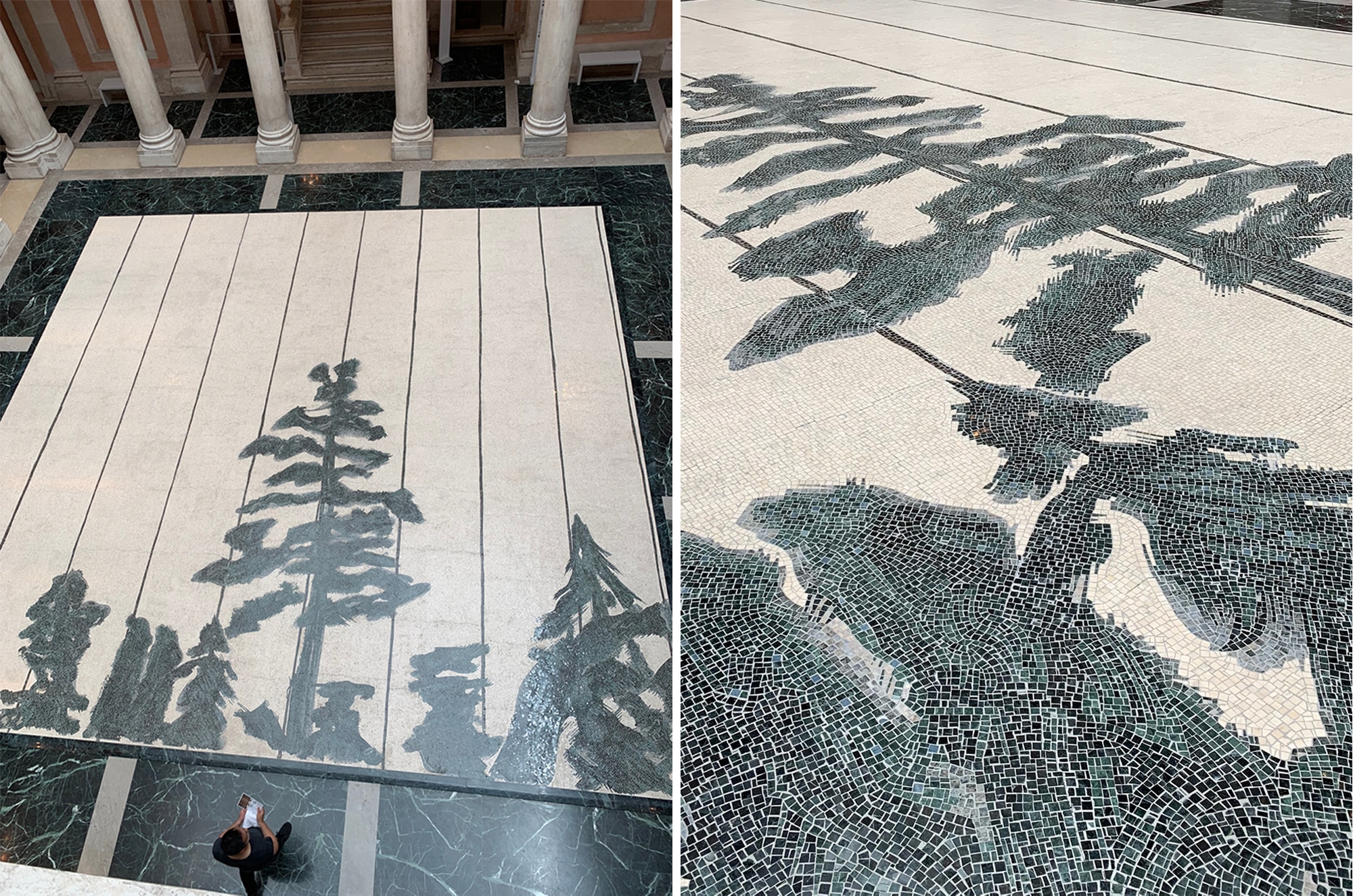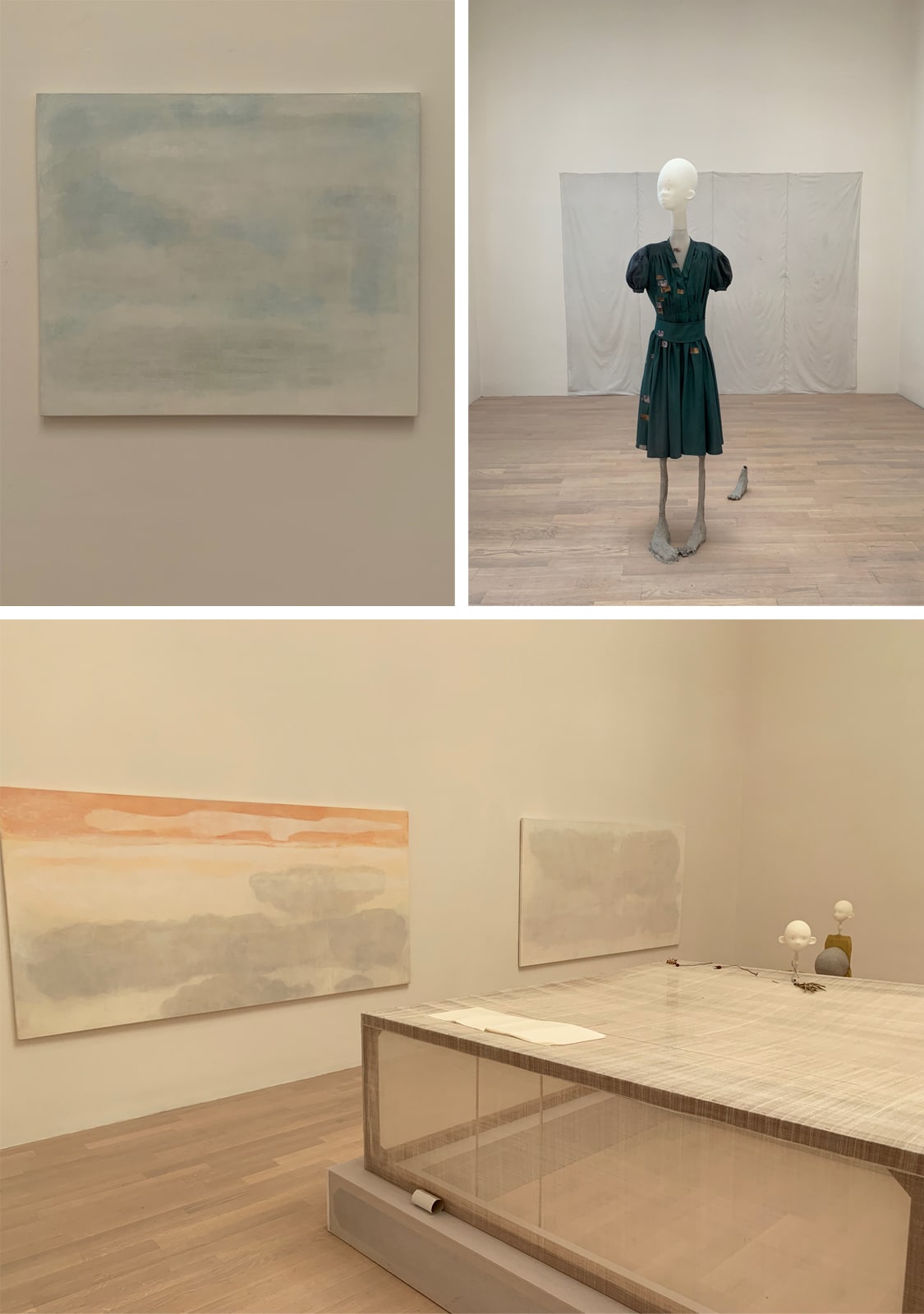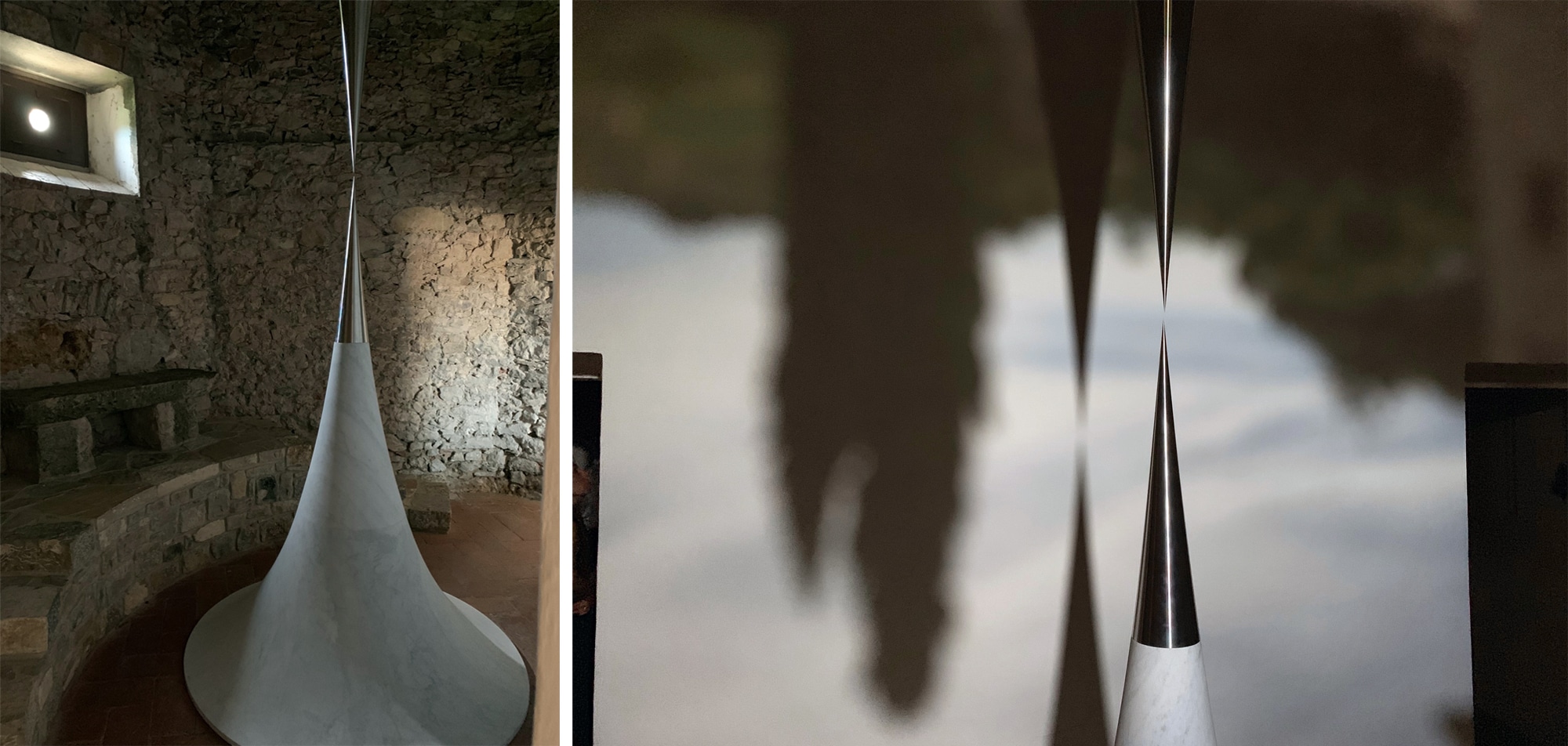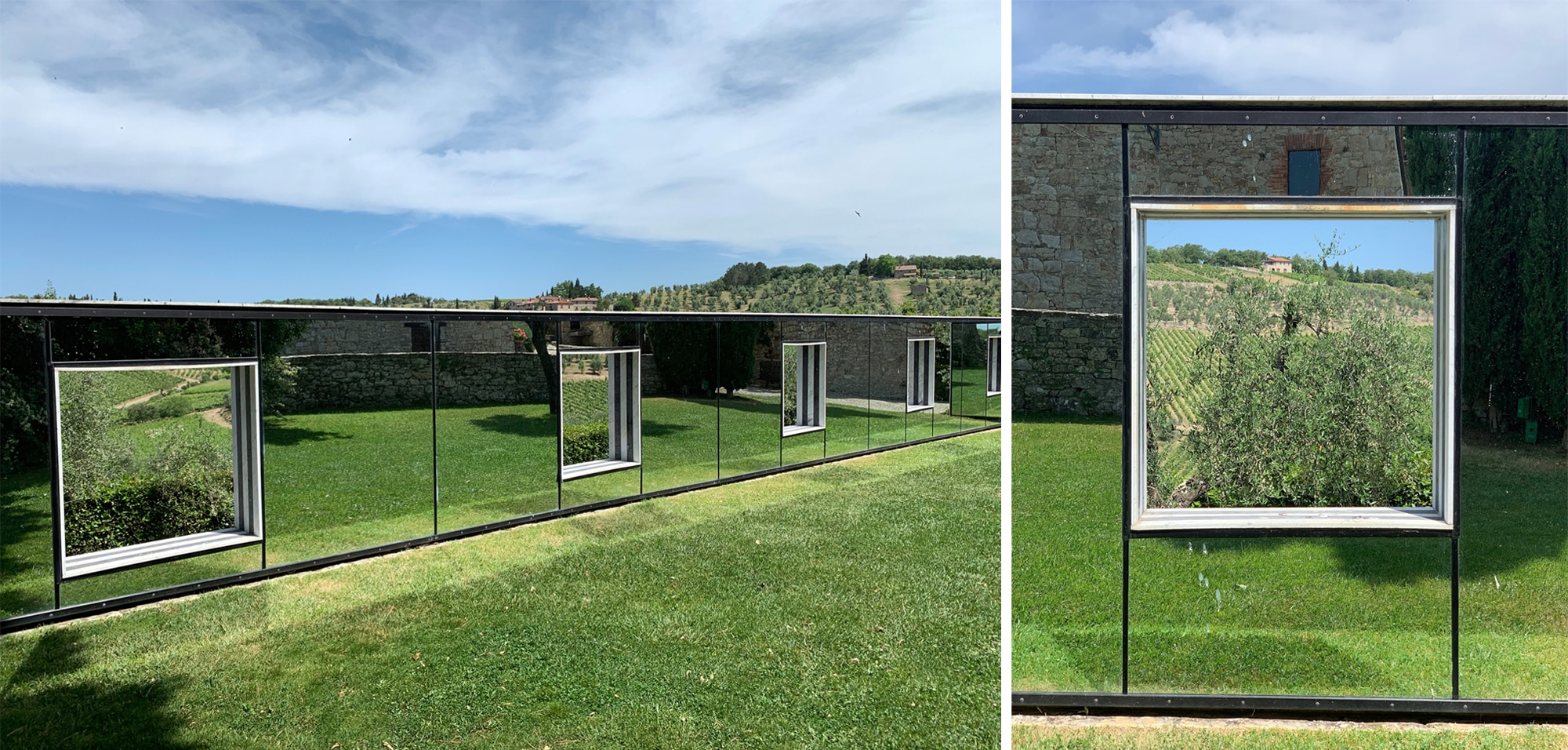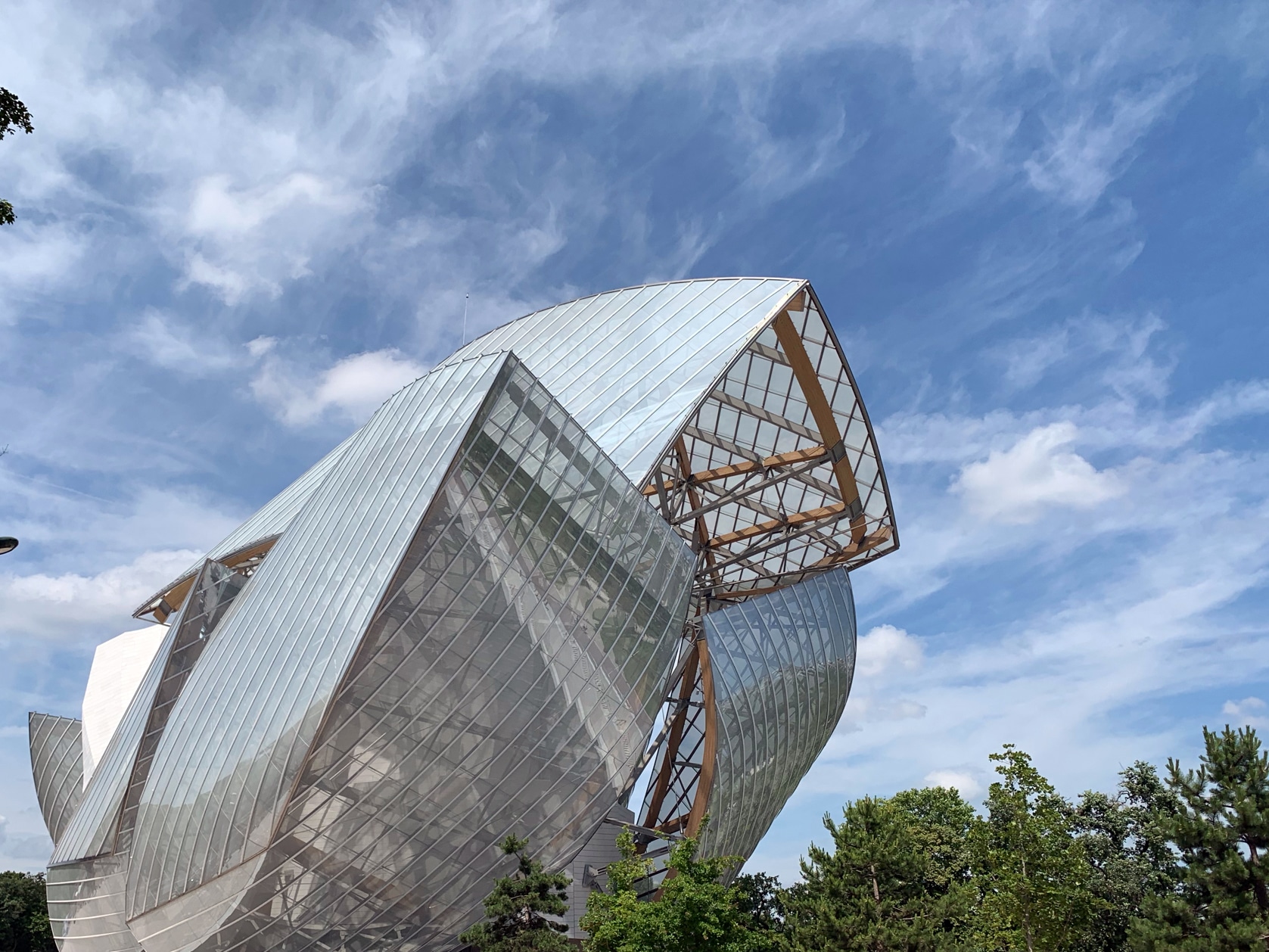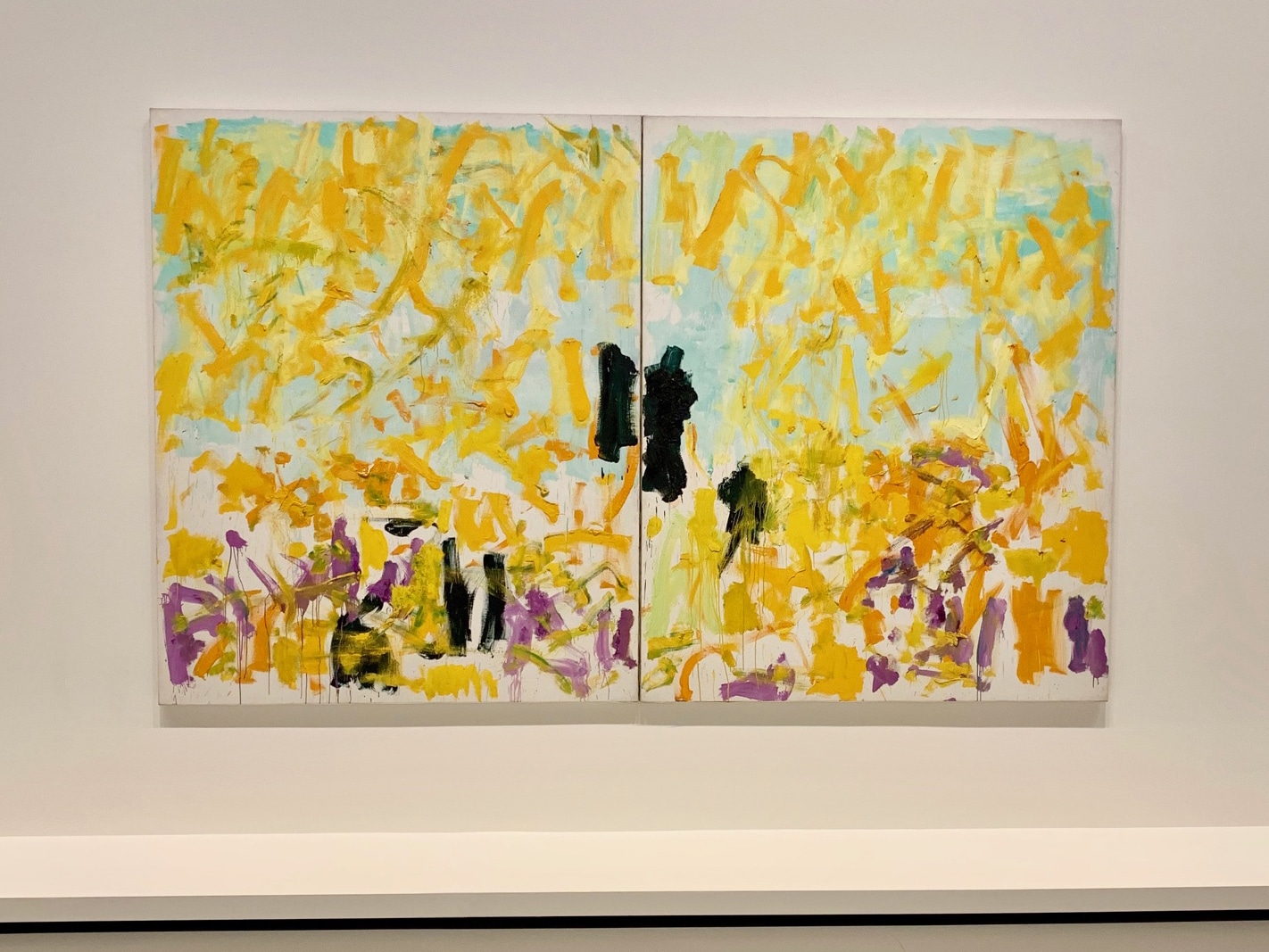Art Basel Miami Beach
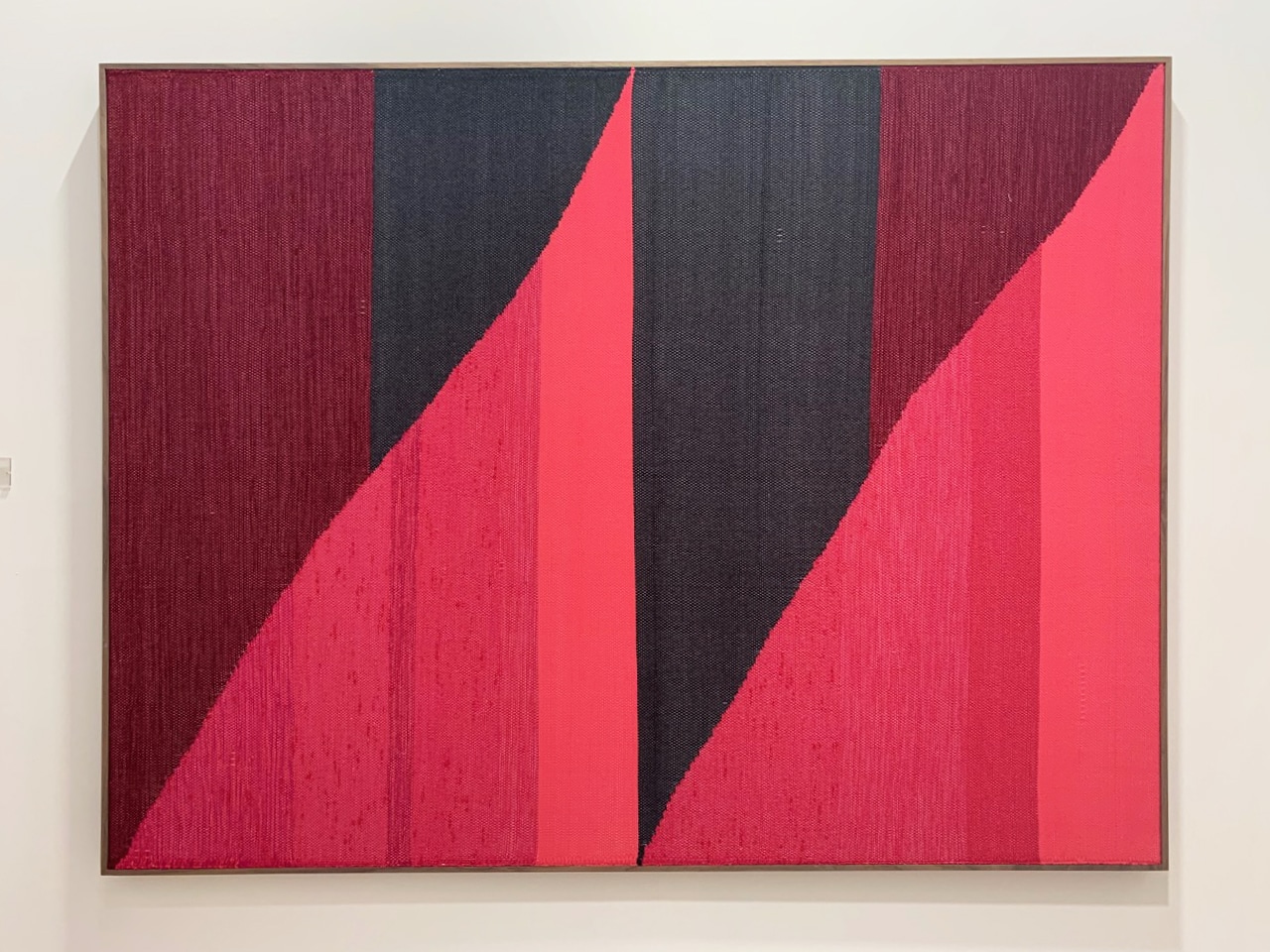
Brent Wadden, “Untitled”, 2019, hand woven fibers, wool, cotton and acrylic on canvas. Peres Projects, Berlin booth.
Canadian artist, Brent Wadden works within the vein of assemblage in his large-scale handwoven weavings. He culls his used fibers from other weavers, estate sales and the internet, adding an element of unpredictability and improvisation to his compositional process. Wadden’s geometric abstractions construct a direct dialogue between weaving and various modes of modernist art making, referencing both the historical and social constructs of craft and modernism.
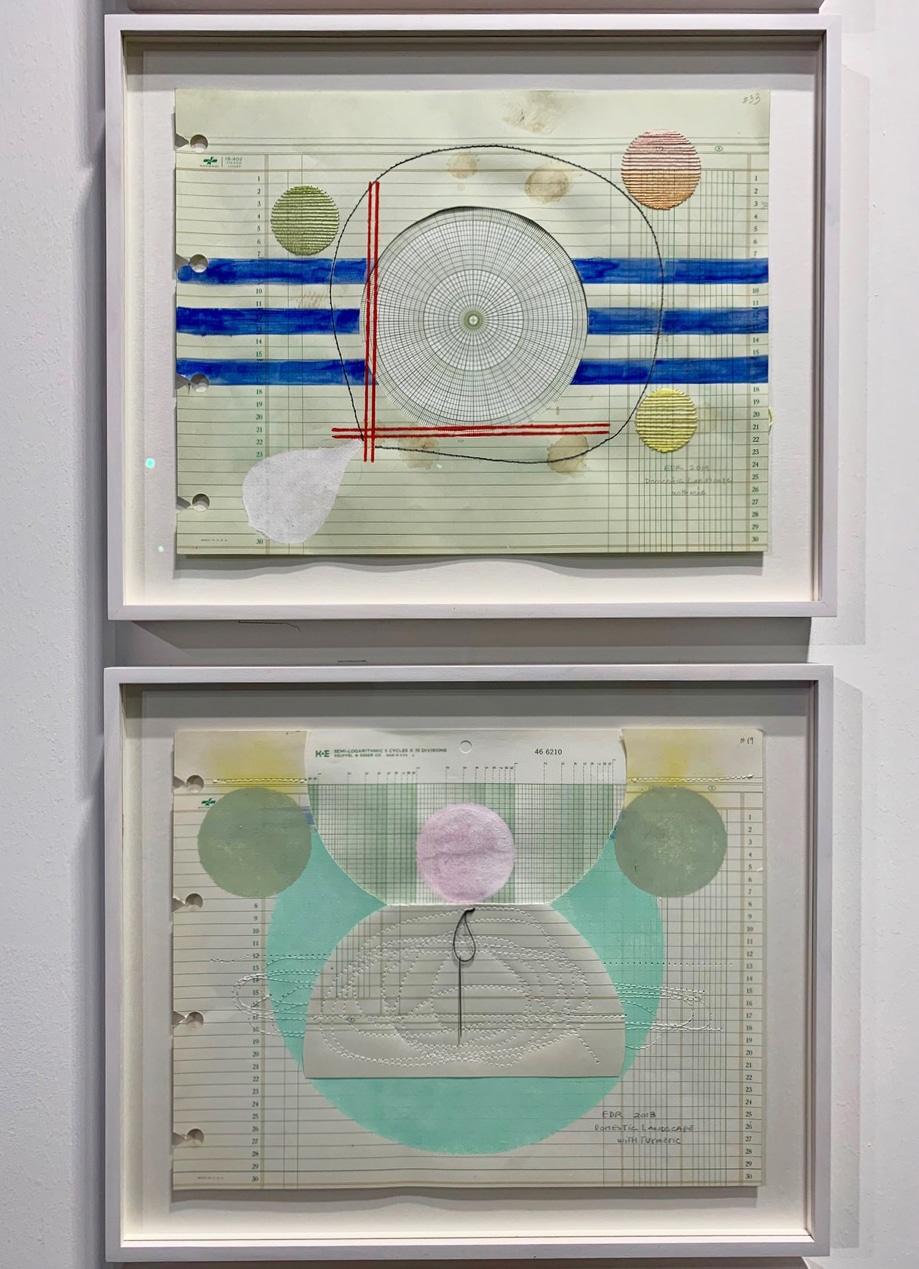
Elena del Rivero, (top) “Domestic Landscape with Wine, #33”, 2019. (bottom) “Domestic Landscape with Turmeric, #19”, 2018, gouache, thread, wine, on collaged vintage graph papers. Traversia Cuarto booth.
In Del Rivero’s practice, she communicates her personal experiences through stitching and collage, incorporating organic stains and tears that she calls wounds. Veiled in a poetic ambiguity, she has chosen to never explicitly reveal details of her life’s narrative. Instead, her work acknowledges certain experiences and historical events that she has witnessed.
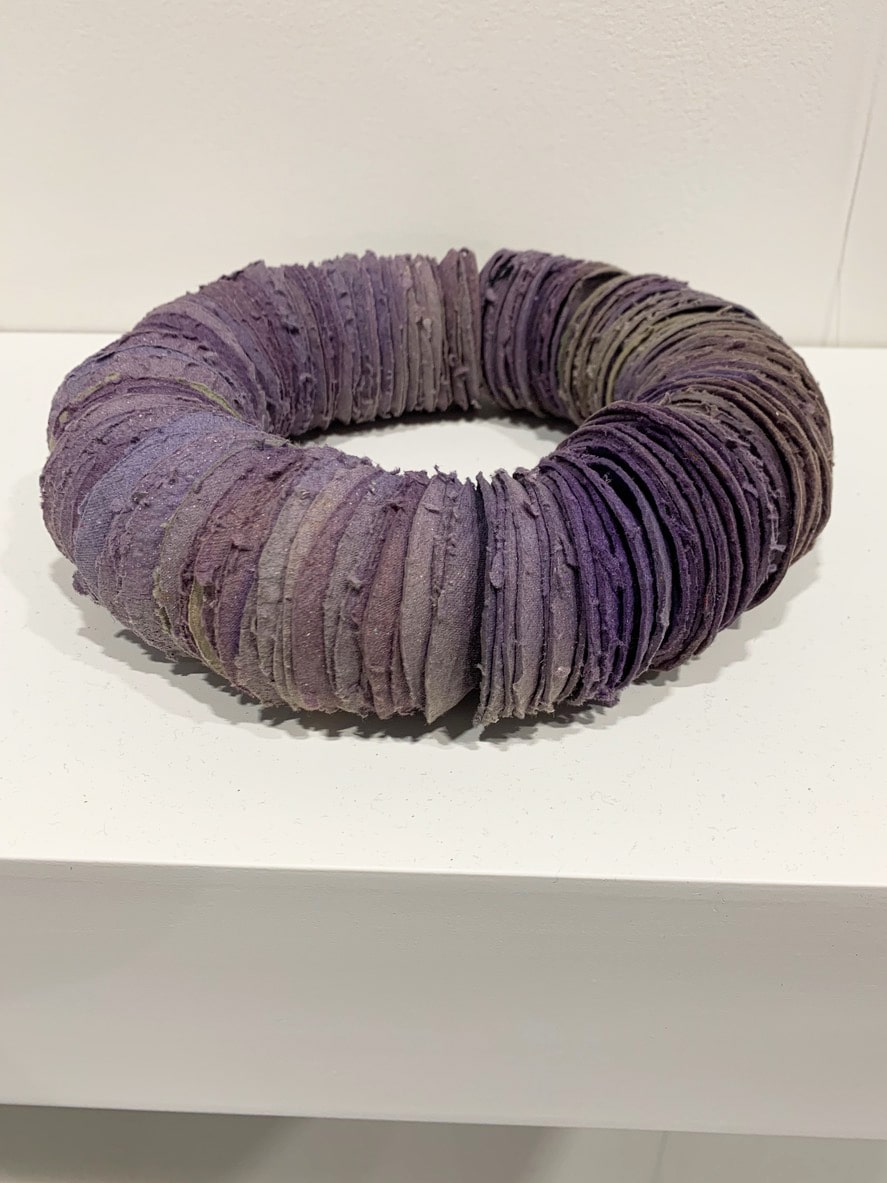
Veronica Ryan, “Donut”, 2018, cardboard and thread. Paula Cooper Gallery booth.
Born in Plymouth, Montserrat and raised in England, Veronica Ryan has engaged with issues of history, identity, dislocation, and belonging throughout her career. Her meticulously handcrafted works—while quiet and elusive—also contain a capacity for provoking an eruptive and disquieting internal dialogue. Composed of materials that reference her Afro-Caribbean heritage, the works examine the psychology and semantics of perception, as well as allude to notions of home, memory, and loss.
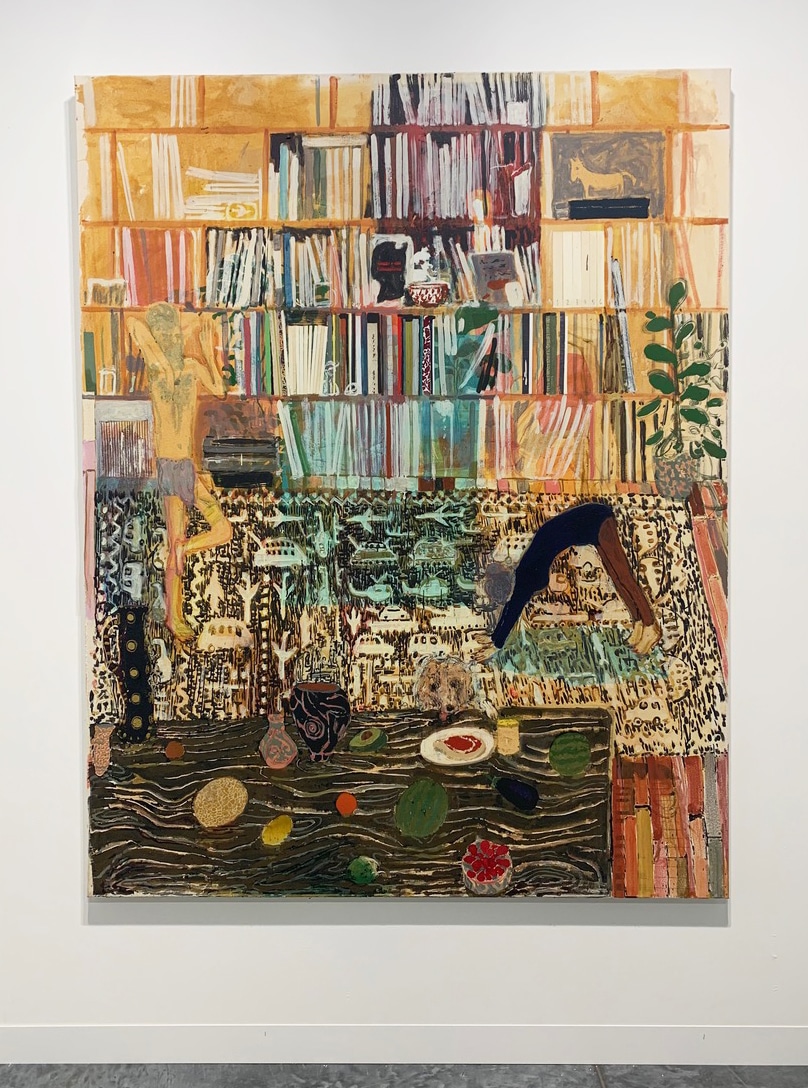
Andrew Cransten, “Relationship”, 2019, distemper on canvas. Ingleby Gallery booth.
Cranston’s work is seductive in terms of its use of narrative and humor which touches on the strangeness and pathos of ordinary life. He draws on a variety of sources, in particular his own personal history; questioning the veracity of memory. This autobiographical activity is combined with passages culled from literature, anecdotes and jokes, second hand accounts, images from cinema and observations of life.
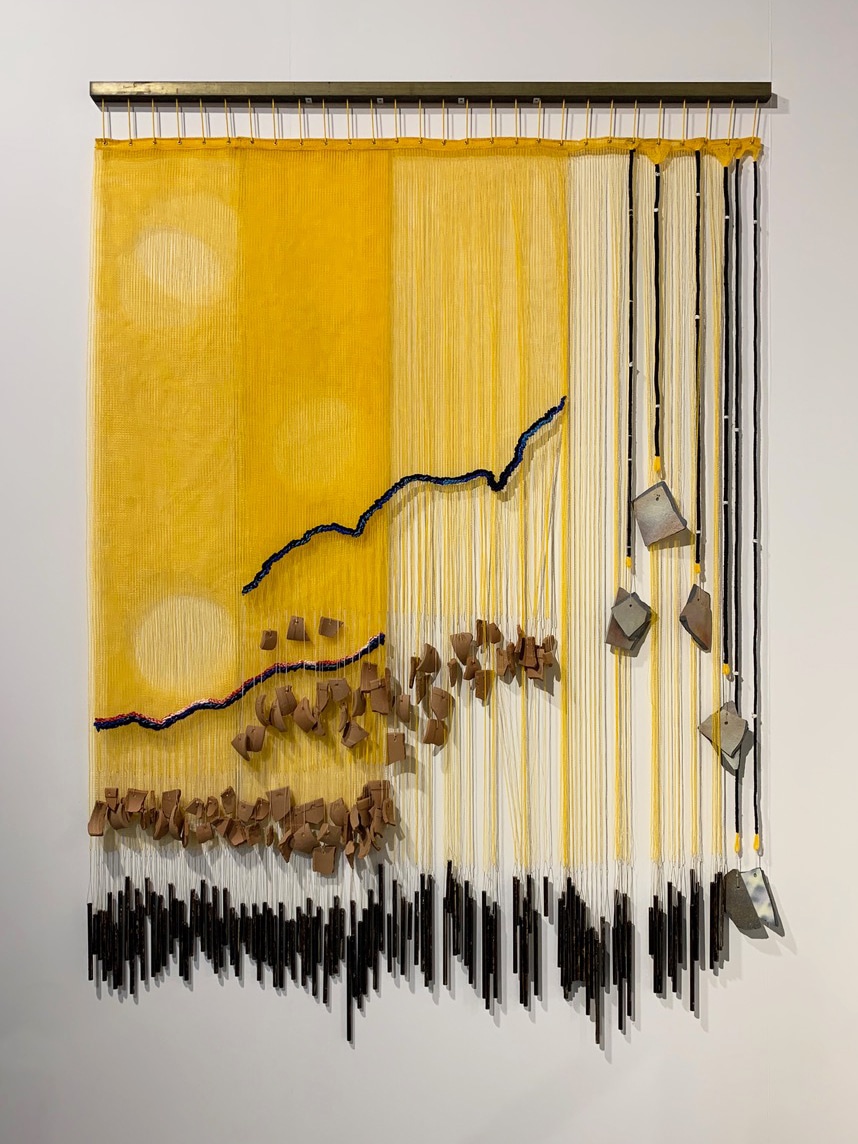
Vivian Caccuri, from the “Pagoda” series, 2019, safety net, chains, polyester cords, cotton thread and aluminum bars. A Gentil Carioca booth.
Brazilian artist, Caccuri uses sound as a vehicle to experiment with issues related to historical and social conditioning. The works in the “Pagoda” series were created from the rubble of the demolition of the Elevado do Perimetral, an elevated highway connection downtown Rio to the city’s south side, for the 2016 Summer Olympics. The works consist of materials that were left over from this construction. They create a sound that is a combination of a chime and shells used for traditional Samba instruments.
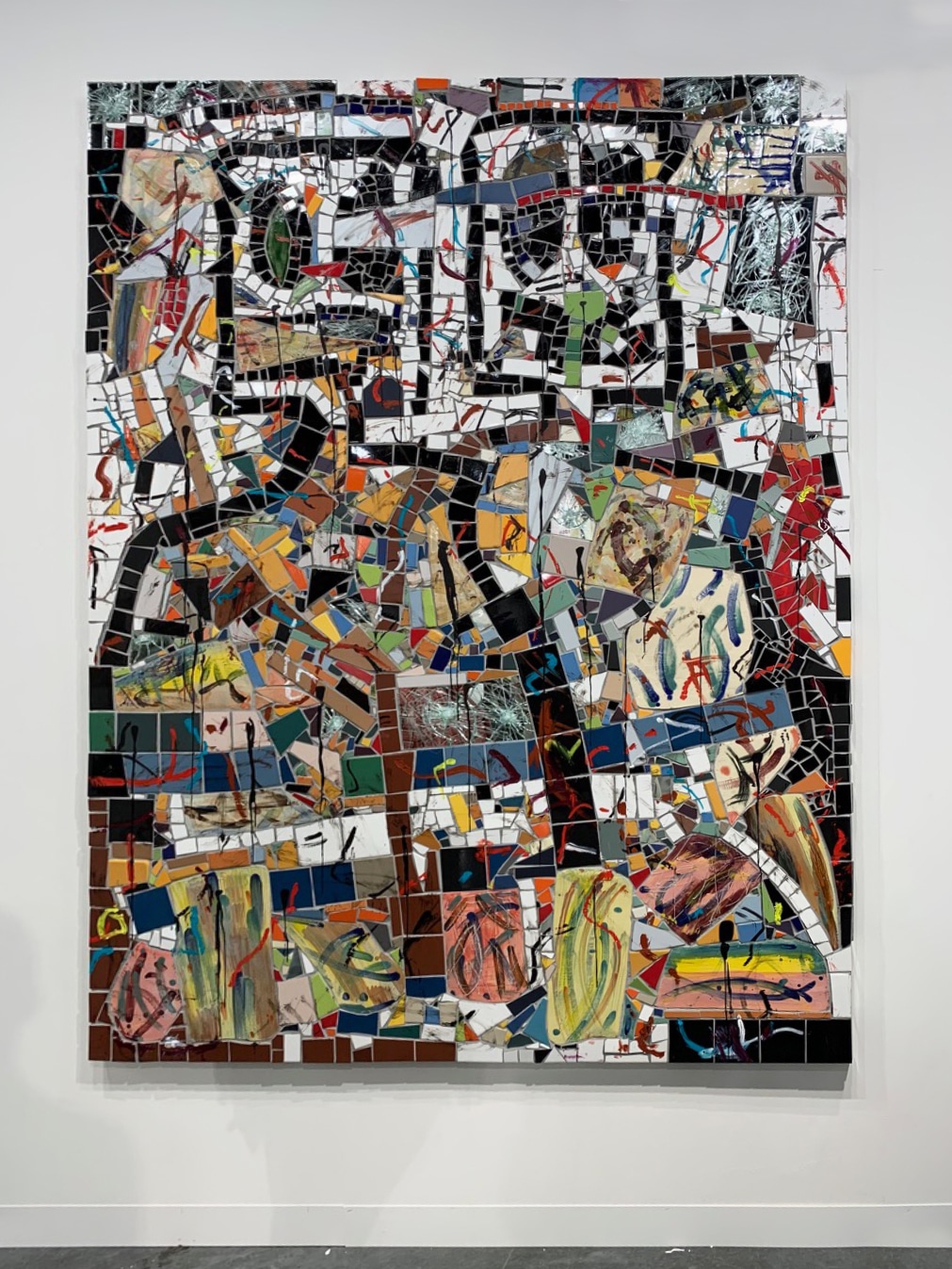
Rashid Johnson, “Two Standing Broken Men”, 2019, ceramic tile, mirror tile, spray enamel, oil stick, black soap, and wax. David Kordansky Gallery booth.
Johnson composes searing meditations on race and class while establishing an organic formal vocabulary that fuses a variety of sculptural and painterly traditions. Though he employs materials drawn from specific autobiographical contexts, including those related to African American intellectual and imaginative life, Johnson is equally interested in testing the ability of abstract visual languages to communicate across cultural boundaries.
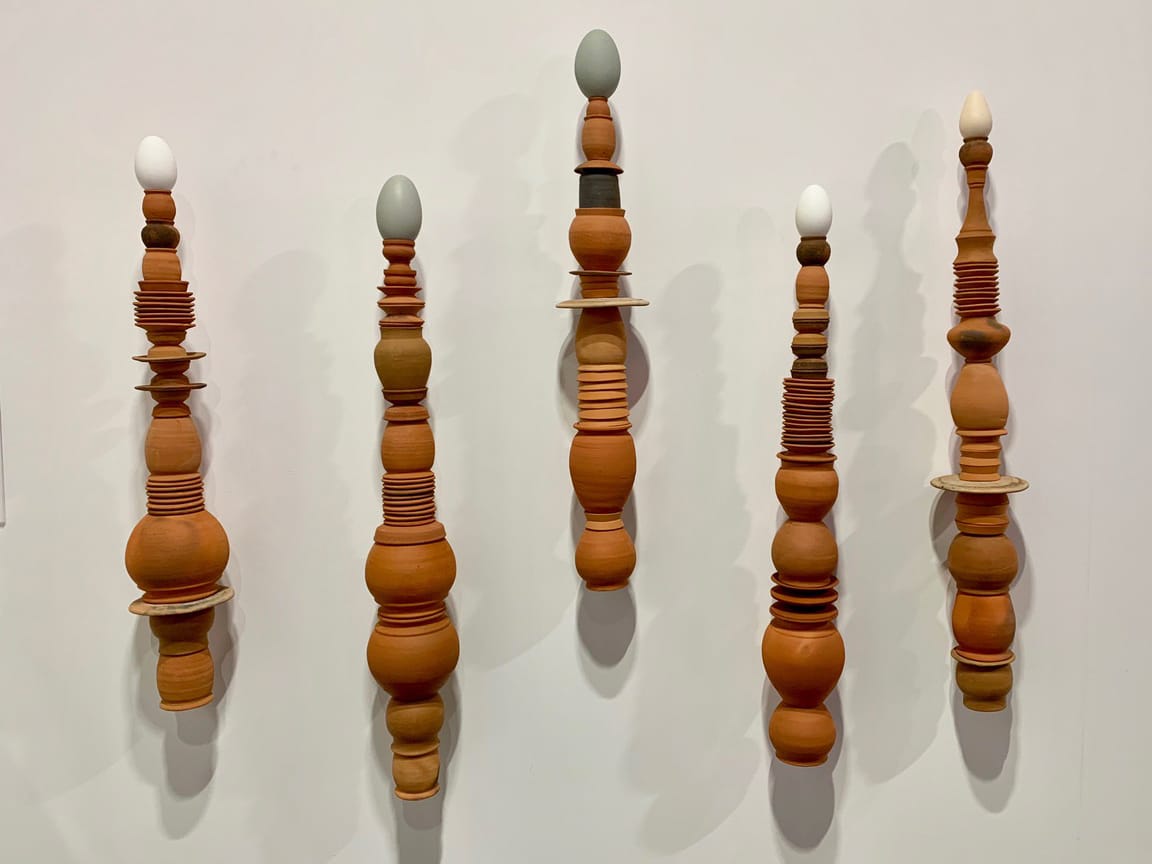
Théo Mercier, “Sculptures pour tremblement de terre”, 2019, terracotta, hollowed eggs, metallic structure. Mor Charpentier booth.
Mercier’s sculptures reference the relationship between the work and its environment. In his installations, he mixes his own sculptures with objects or artifacts he collected over his travels, and seeks to create a real choreography of the eye for the viewer. The diversity of the collections thus gathered is an image of what globalization is; their arrangement evokes a certain archeology of the future where strangeness, poetry and humor emerge from unusual reconciliations.
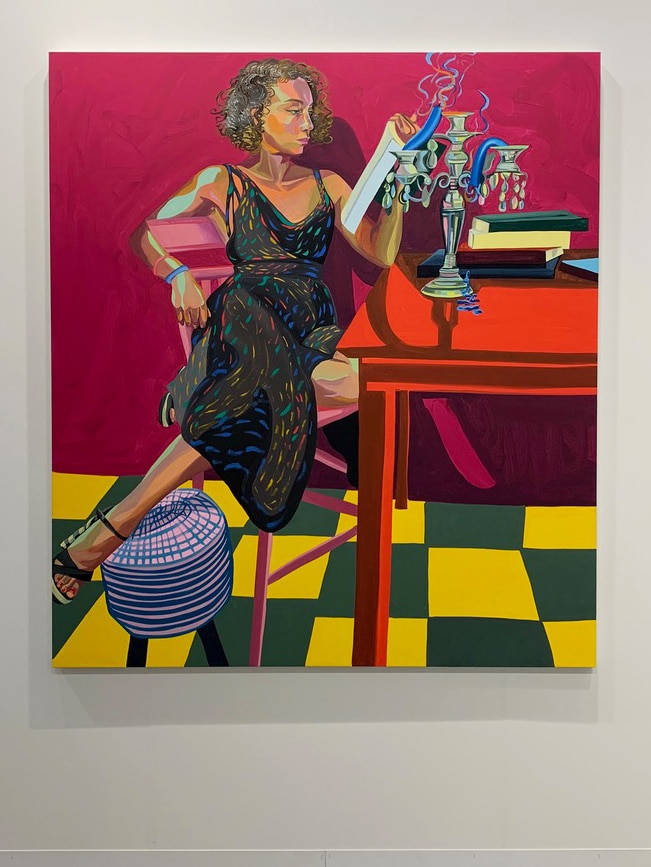
Aliza Nisenbaum, “Jenna, Friday Night in Brooklyn”, 2019, oil on canvas. Anton Kern Gallery booth.
Mexican-born and New York-based activist and painter Aliza Nisenbaum creates works that are the result of her participation in a variety of group and community activities. She began working with portraiture in relation to community organizing in 2013 at the Immigrant Movement International, a grassroots organization headquartered in Queens, New York. Her first engagement with its members was as an English teacher. She found that she so enjoyed getting to know her students that she proposed painting their portraits so as to be able to spend more time with them. A makeshift studio was set up in the middle of the common area with art materials for the community. Nisenbaum has since worked with diverse communities in the US and the UK and exhibited the resulting portraits internationally.
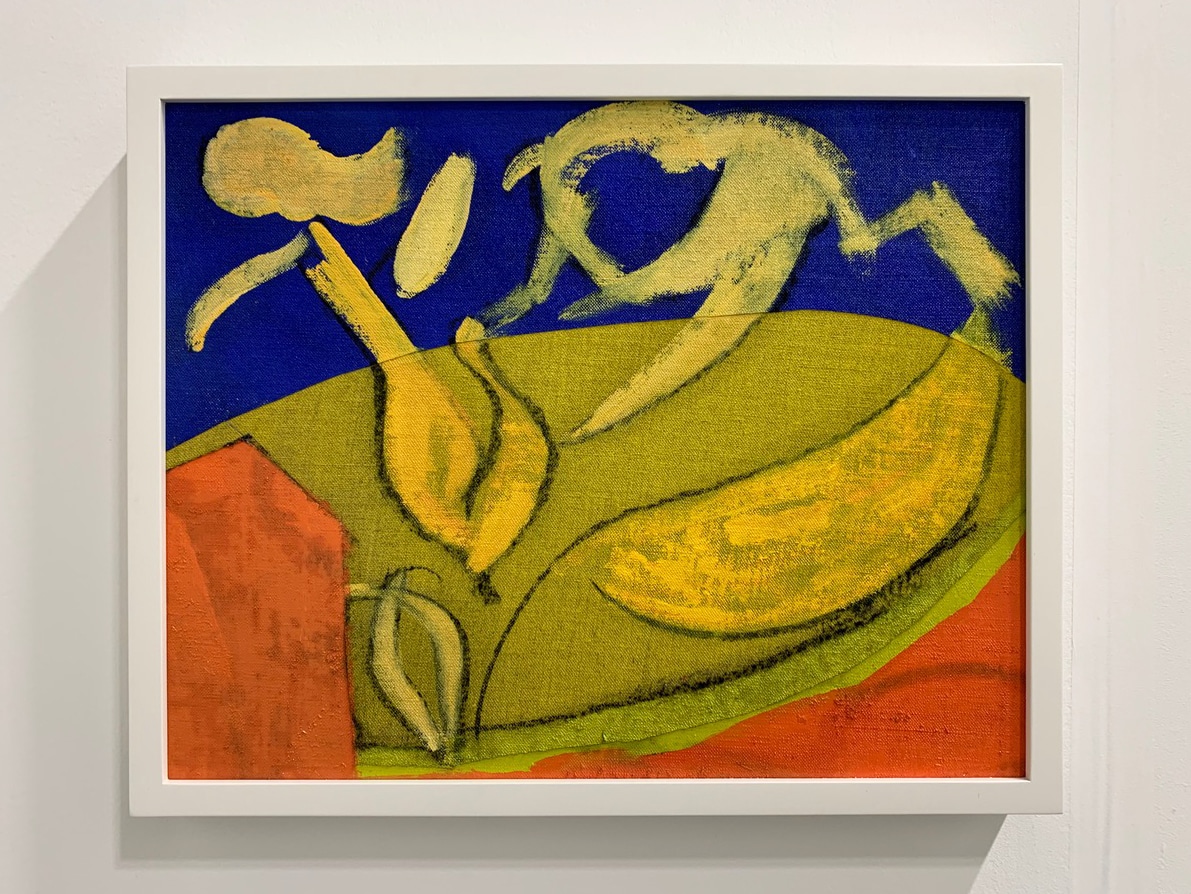
Tim Stoner oil on linen painting. Modern Art booth.
Stoner makes work with a painterly and figurative approach to scenes of social community and landscape. Each piece exposes a complex relationship to the artist’s identity and the place in which the piece was inspired. Motifs are arranged and rearranged, figures are drawn and redrawn, as if in search on an ideal pattern of forms with which to present the dynamic of landscape, an interior, or a community remembered.
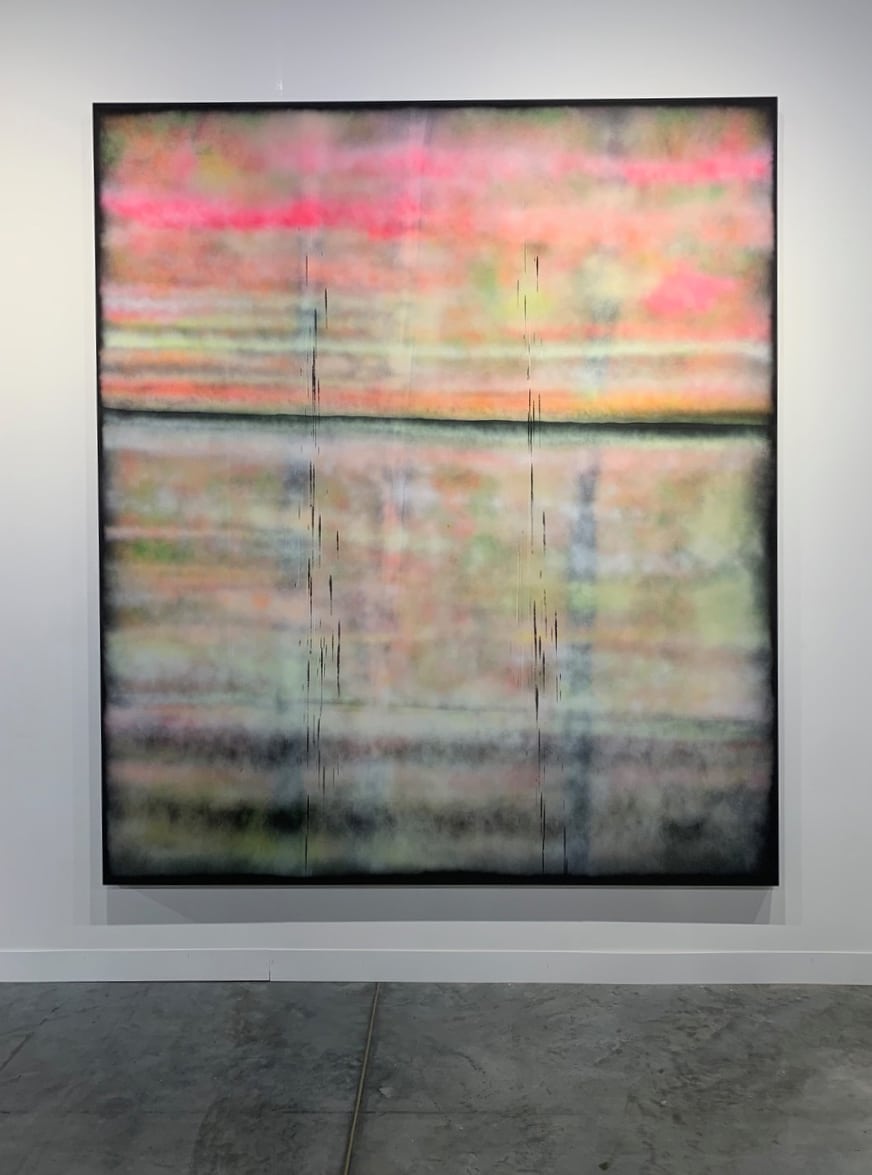
Sterling Ruby, “SP268”, 2018, spray paint on synthetic canvas. Xavier Hufkens booth.
Ruby’s interdisciplinary practice incorporates sculptures, collages, ceramics, paintings and videos, which act as markers and metaphors for the burdens that plague contemporary existence. Of the disparate forms in Ruby’s practice, the paintings are the most formally abstract. His large color-field canvases, made entirely with spray paint, contain hallucinogenic and elusive visions, hinting at images, which never quite come into focus. Ruby’s paintings translate acts of defacing and demarcation into a kind of painterly transcendence.
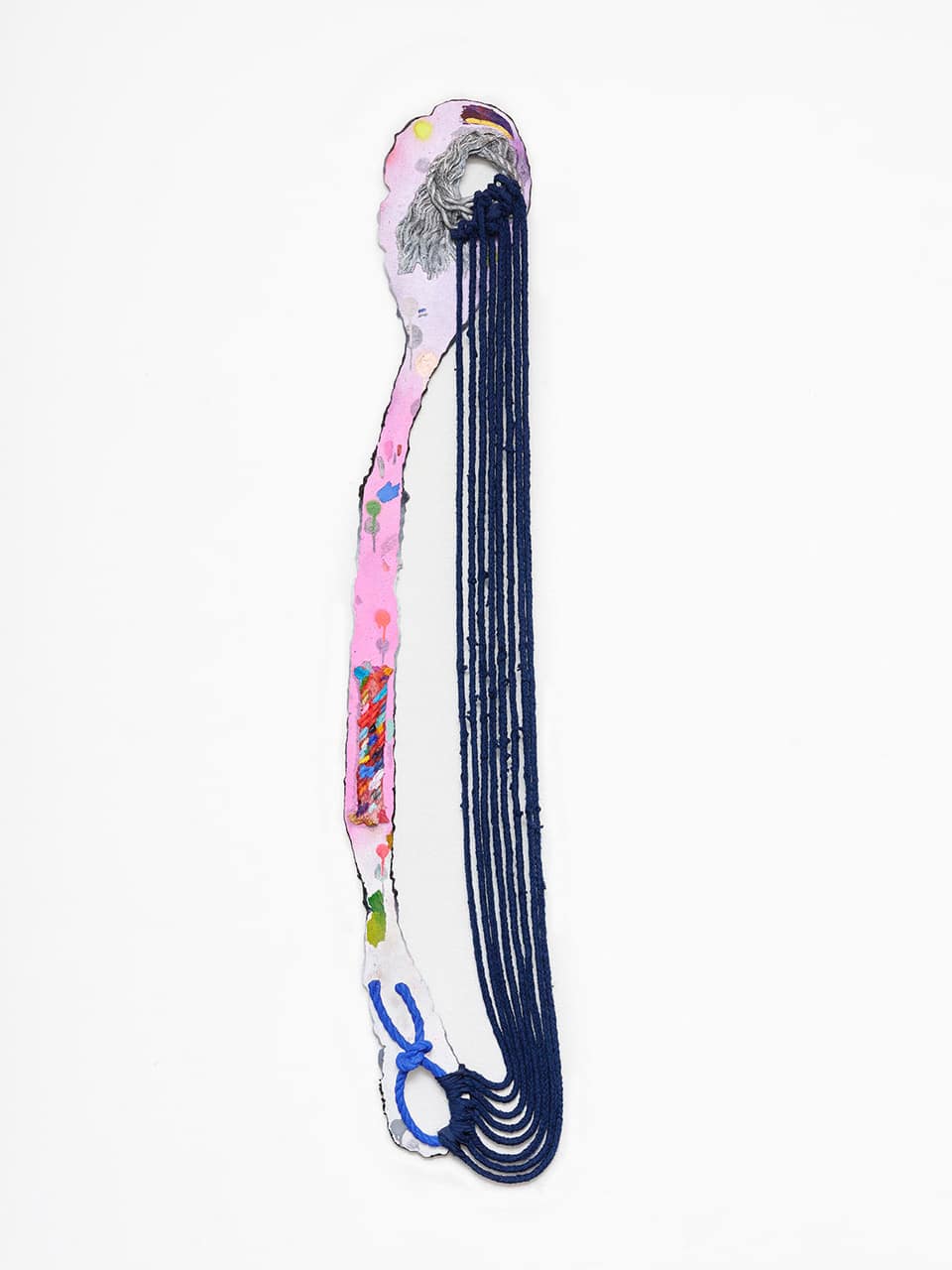
Katy Cowan, “The Pink Harp”, 2019, oil and enamel paint, graphite on cast aluminum, braided rope. Philip Martin Gallery booth.
Cowan’s work investigates the terms of the art object, the identity of the maker and the site of making itself. Cowan’s body, her studio tools and the events in her immediate environment serve as generative subject-matter for her artworks. These artworks investigate human experience and the traces left by such experience. Cowan’s work concisely illustrates how artists of her generation are thinking with regard to the art object while at the same time advancing the arguments made by artists in previous eras.
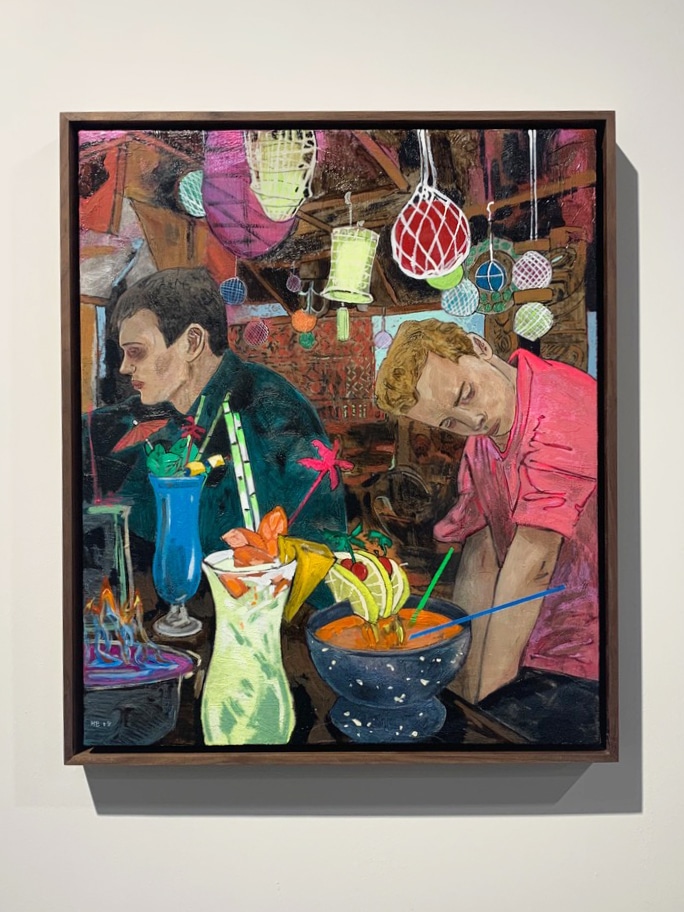
Hernan Bas, “a zombie and a flaming volcano”, 2019, acrylic on canvas. Fredric Snitzer Gallery booth.
Bas’ work illustrates his innate ability to highlight cult phenomena from the past that offer insight into the political and social concerns of today. His paintings weave together adolescent adventures and the paranormal with classical poetry, religious stories, mythology, and literature. His subjects are often young men, typically in the transitional moment between boyhood and manhood. Bas’ works span time periods and themes, providing a unique perspective on American subculture and a contemporary version of History Painting.
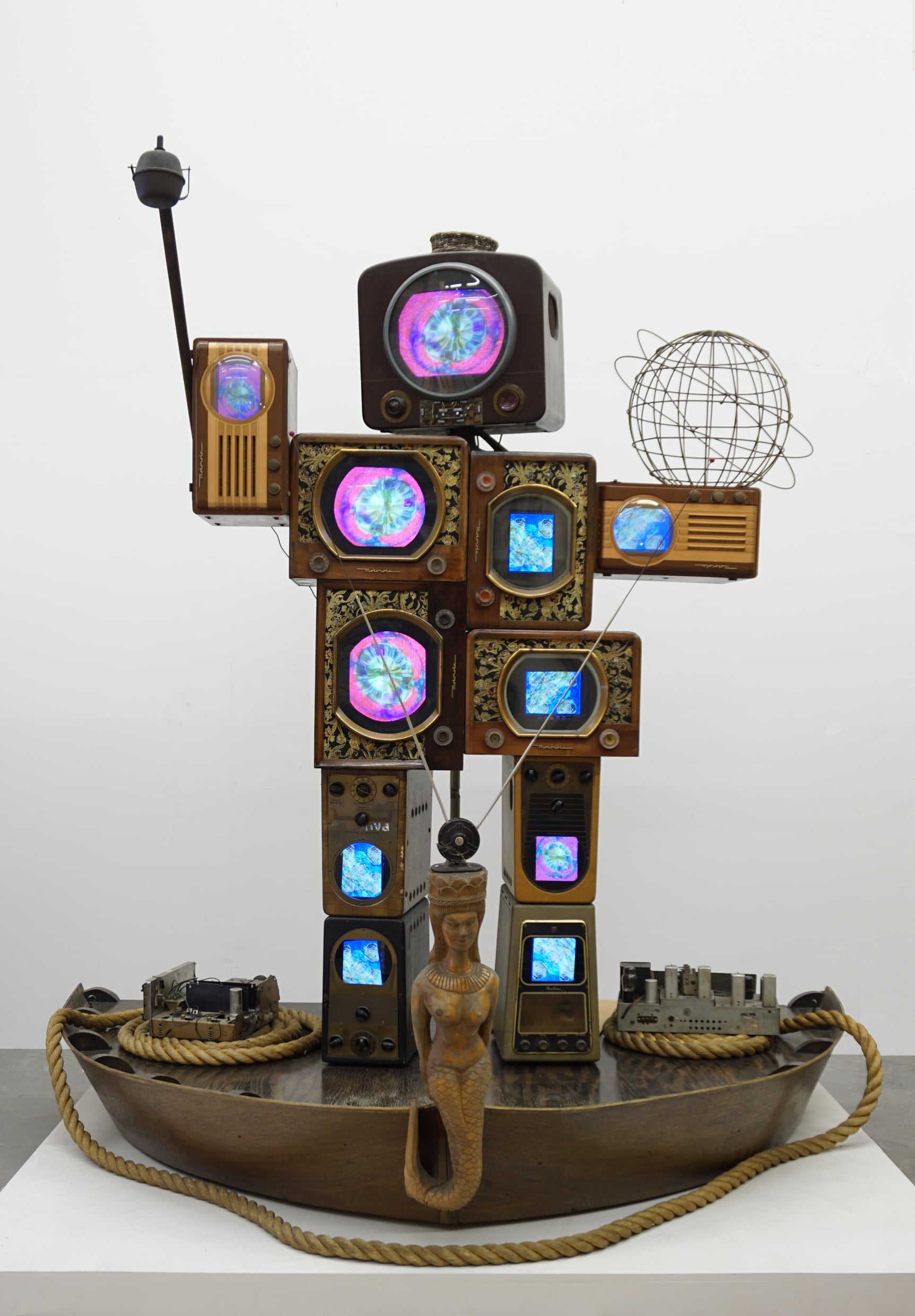
Nam June Paik, “Columbus (Eco-Lumbus) + Columbus Boat”, 1991, 11 television sets, 2 laser disk players, wood, wrought iron, brass and mixed media. Annely Juda Fine Art, London booth.
Often described as the father of video art, Nam June Paik surfed the forefront of cutting edge technologies and utilized them to realize artworks. His various experiments positioned video as a viable art form, and a tool toward accomplishing widespread, global connectivity – an oeuvre prophetic to our contemporary information age. His revolutionary practice laid the groundwork for today’s artists working in new media art. Such a treat to see this vintage piece on view.
UNTITLED, ART
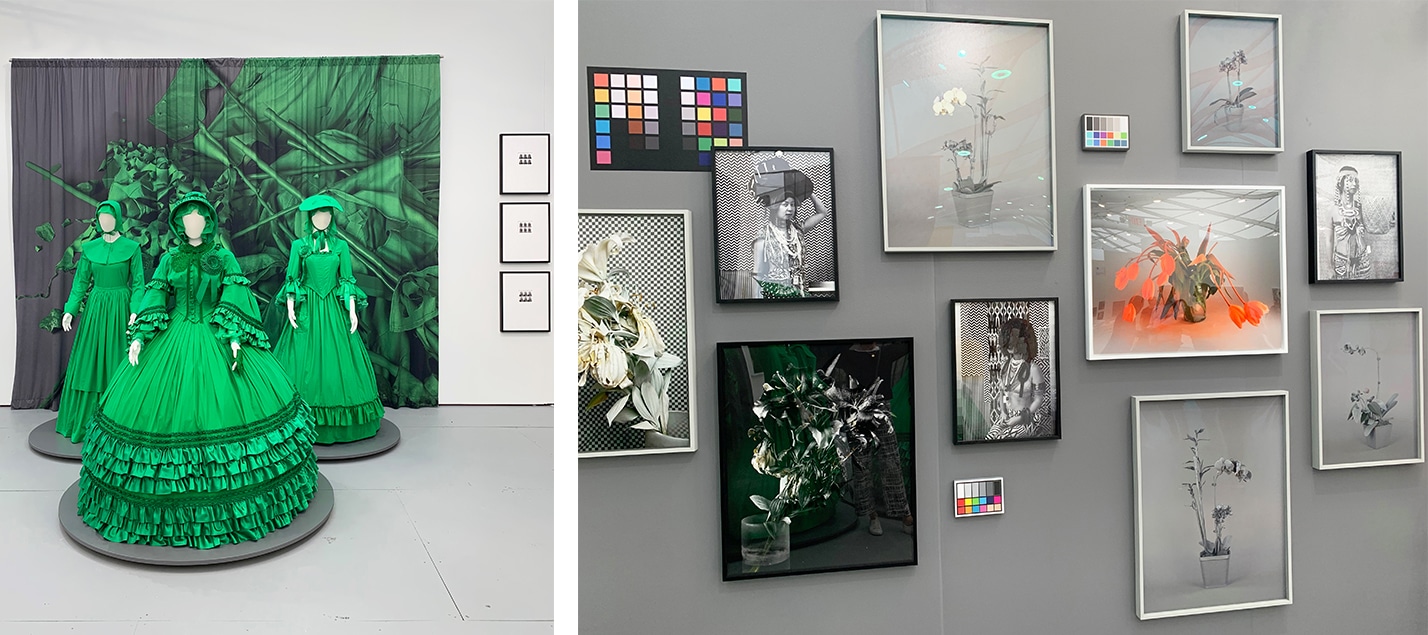
Stephanie Syjuco installation view. Catherine Clarke Gallery booth.
Bay Area artist, Stephanie Syjuco’s presentation featured key works from recent projects that explore how photography and other image-based technologies can appear as structures of power. Her recent projects often question ideas around citizenship and what is means to be an American. Syjuco’s sculptures and photographs reference genres like still life and ethnographic portraiture as a means to critique questions of empire and nativism that pervade through art history.
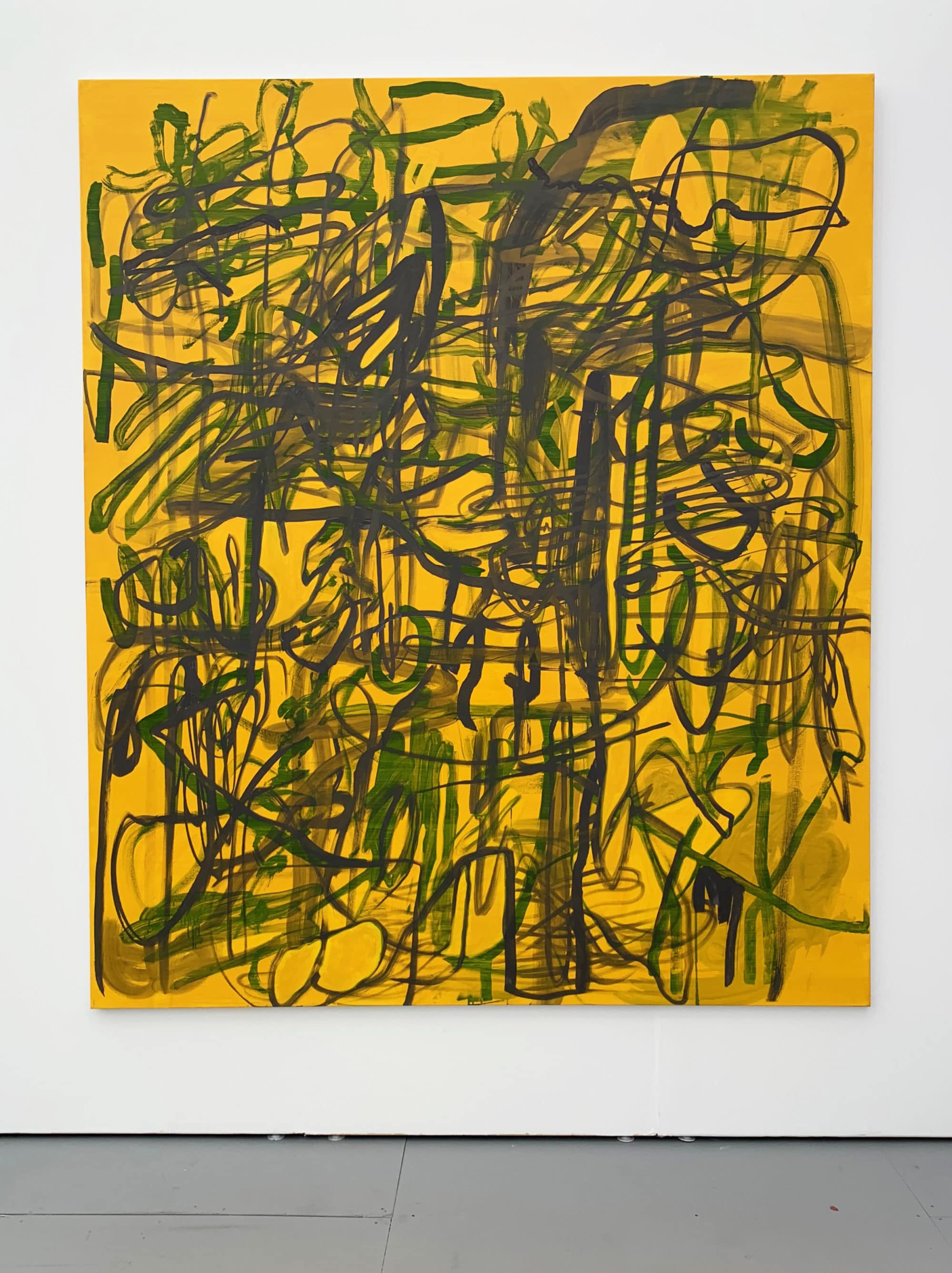
Jana Schröder, “Kadlites VL2”, 2019, acrylic, graphite and lead on canvas. Nino Mier Gallery booth.
German conceptual painter and student of Albert Oehlen, Jana Schröder approaches each work as a problem to be solved. In these paintings, she applies lead powder mixed with turpentine over cadmium yellow acrylic, resulting in an additive and subtractive layered experiment. Her practice is driven by discipline, performance and conceptual study.
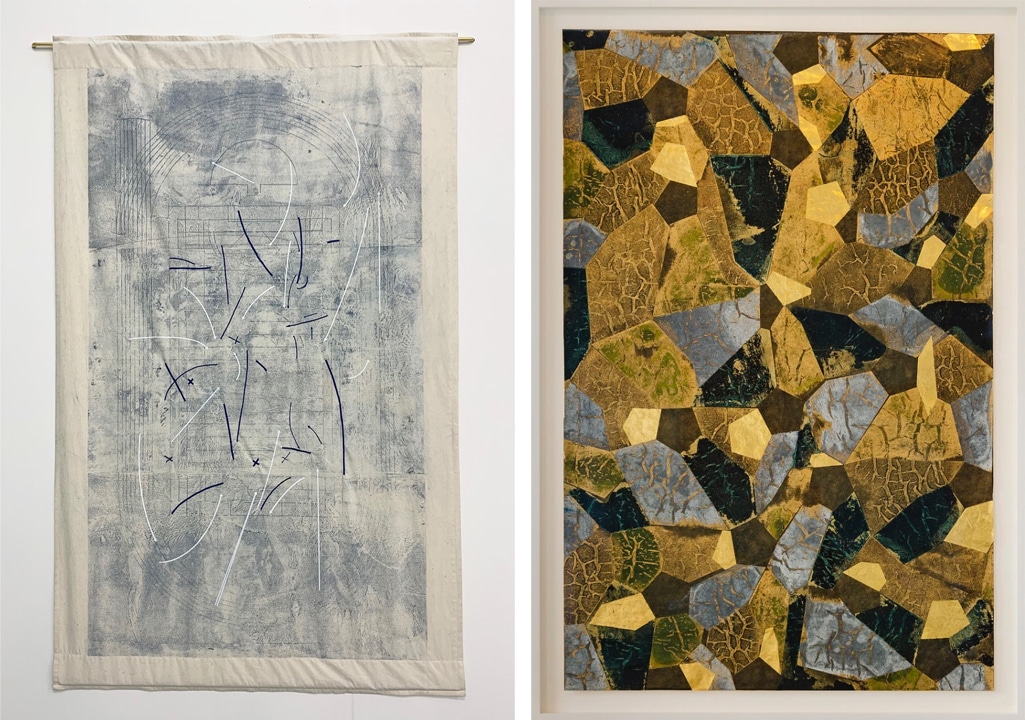
Ronny Quevado (left), “topografía lyr(ic)a”, 2019, wax, screen print and thread on muslin. (right) “ley de la ventaja (for Alberto Spencer)”, 2019, wax and gold leaf on carbon paper. Upfor Gallery booth.
Quevedo works in a variety of mediums including sculpture and drawing. Having moved from Ecuador to New York City in the 80s, his work interlaces autobiographical insights from his upbringing such as his father’s professional soccer career, and his mother’s work as a seamstress.
New Art Dealers Association (NADA)
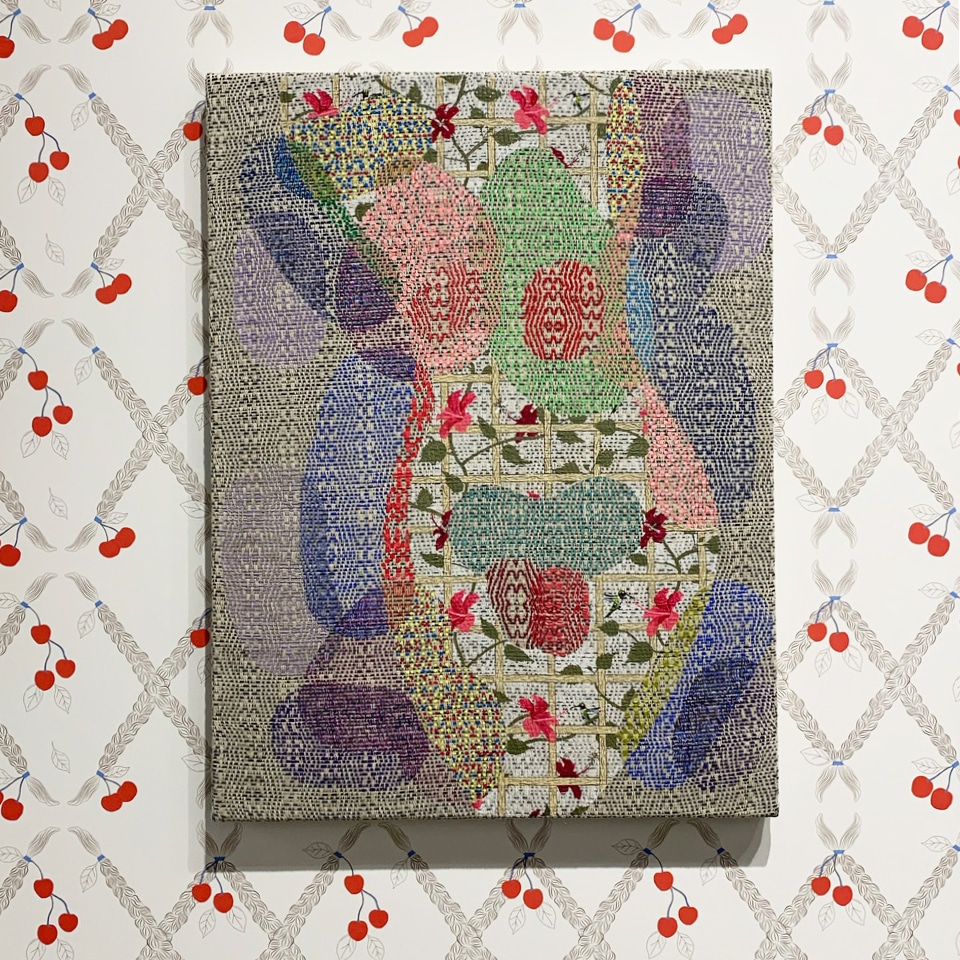
Mark Barrow & Sarah Parke, “Woman III”, 2019, acrylic and embroidery on hand-loomed linen. JDJ booth.
Husband and wife collaborative team, Mark Barrow and Sarah Parke’s practice explores the logic of weaving and its relationship to visual and digital systems. The paintings on hand-loomed and embroidered fabric and artist-designed wallpaper create an immersive installation which holds qualities of a domestic space.

Peter Linde Busk, “One Flew over the Cuckoo’s Nest” with detail, 2019, reconditioned copper etching plates, various kinds of treated wood, natural stones, fired & glazed ceramics, porcelain, gold leaf, woodprint on copper, printing ink, cardboard, white gesso, various prints on paper, linen, natural stones, plaster, terra puzzolane, oxides, copper leaf, on board. Derek Eller Gallery booth.
Danish artist, Peter Linde Busk has created a living ecosystem that constantly feeds his practice. Studies, fragments, cuttings, leftover wood, cardboard, glass, and paper are re-purposed and incorporated into compositions. This simultaneous scarcity and abundance of material provides a sense of freedom and constraint characteristic of his work. This dialectic is also instilled in the fantastical characters that populate his oeuvre. Clown-like knights, fallen dandies, and kings seem at once in control of their narrative and environment while trapped within their own worlds.
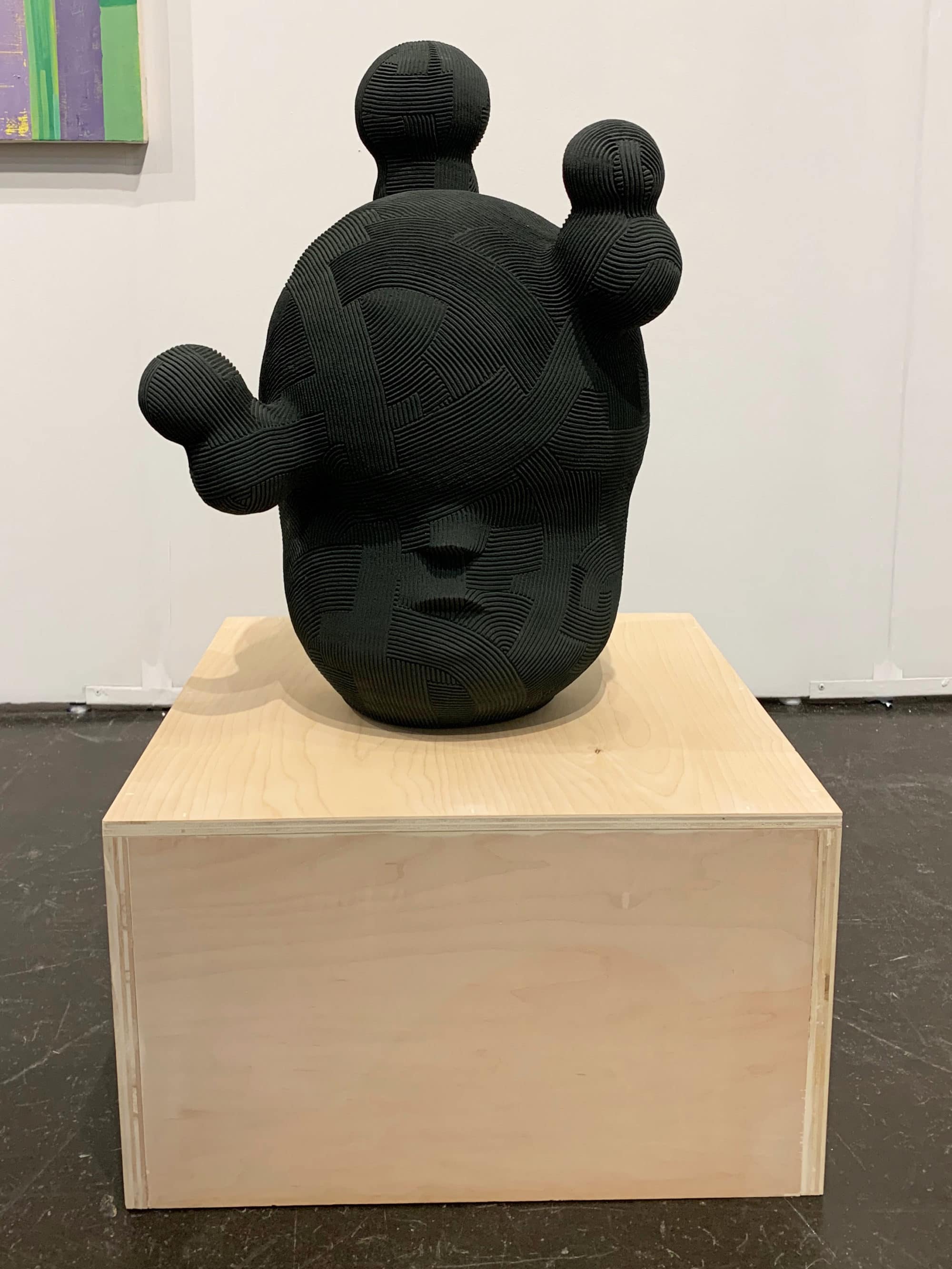
En Iwamura, “Shadow in Black”, 2019, ceramic. Stems Gallery, Brussels booth.
Iwamura uses clay as his medium because it allows him to experiment with the viewer’s experience of occupying space concurrently with his work. He references this relationship between negative space, viewer, and object back to the Japanese philosophy of Ma, which has been described as a pause in time, an interval or emptiness in space. Finding the most comfortable Ma between people, places, or objects can create a specific relationship with that person, place or object relative to an exact moment in time. More than just being three dimensional, clay is also in itself an ancient medium, which helps Iwamura further explore his interest of specific moments in time.
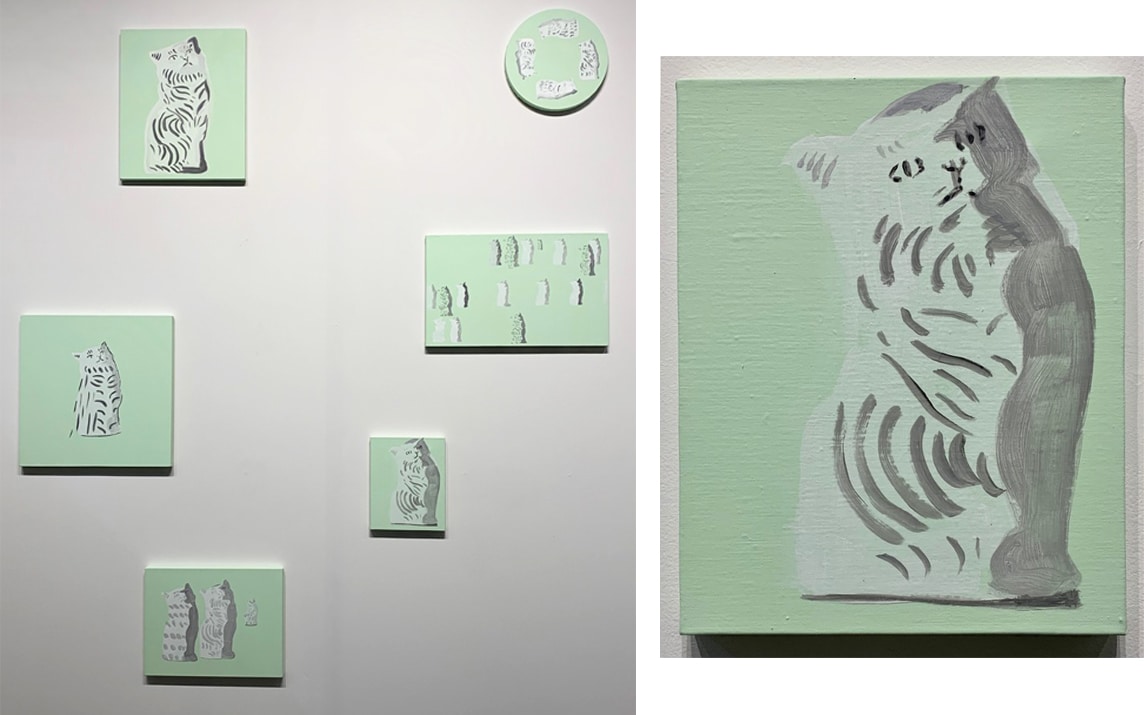
Shimon Minamikawa, “(Various) Cat Figurines,” 2019, acrylic on canvas. MISAKO & ROSEN booth.
Since the beginning of his career, Shimon has made work that deviates from conventional painting and other formats. By showing a number of works with different qualities alongside each other, the artist rearranges the meaning of each individual piece, and turns the space into a work of art. Shimon Minamikawa’s cat paintings participate in a rich, if fraught tradition of painting and repetition.
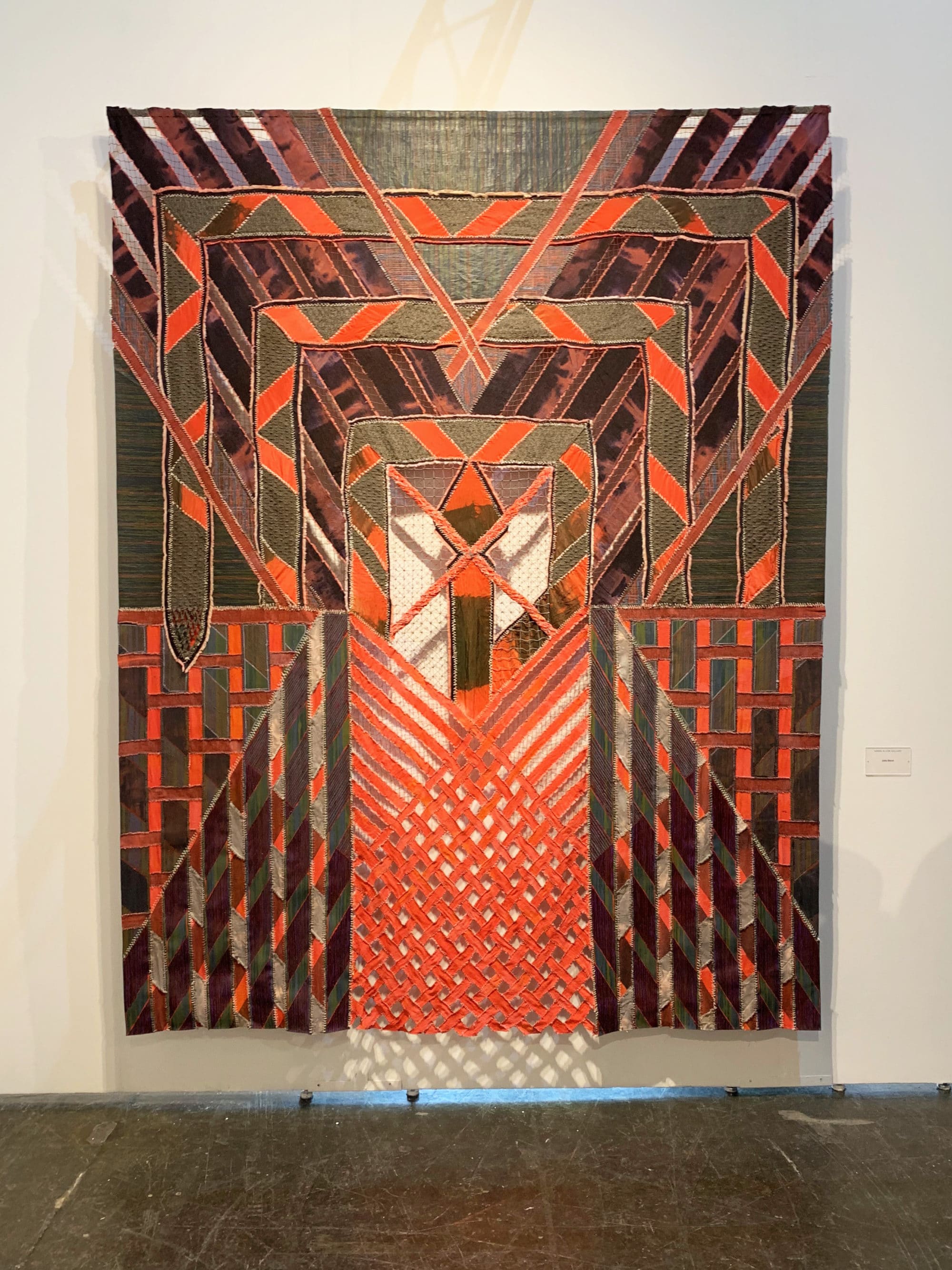
Julia Bland, “Drink This”, 2016, canvas, denim, silk, fabric dye, hand woven textiles, linen and wool threads, oil paint, wax. Derek Eller Gallery booth.
Through acts of weaving, cutting, burning, sewing, dying and painting, Bland continually assembles and dissembles various materials to create her final forms and resultant imagery. Repeatedly burning and layering sheets of canvas, the edges darken and follow their natural patterns outward like topographical maps. She cuts, ties, and paints these into swaths of fabric that have been woven and died by hand. Shedding definitive notions of creation and destruction, the surfaces emerge as the immediate record of these evolving, dialectical transformations. For Bland, weaving manifests the myriad ways human beings ask and answer questions of being, difference, desire, and community.
Rubell Museum
Renown art collectors, Mera and Don Rubell, moved their storied art collection into a stunning new museum building in the Allapattah nieghborhood in Miami. Drawn entirely from their expansive collection of over 7,200 works by more than 1,000 artists, the inaugural exhibition features defining and seminal works by artists whom the Rubells championed as they were first emerging (often becoming the first collectors to acquire their work) and those who had been overlooked.
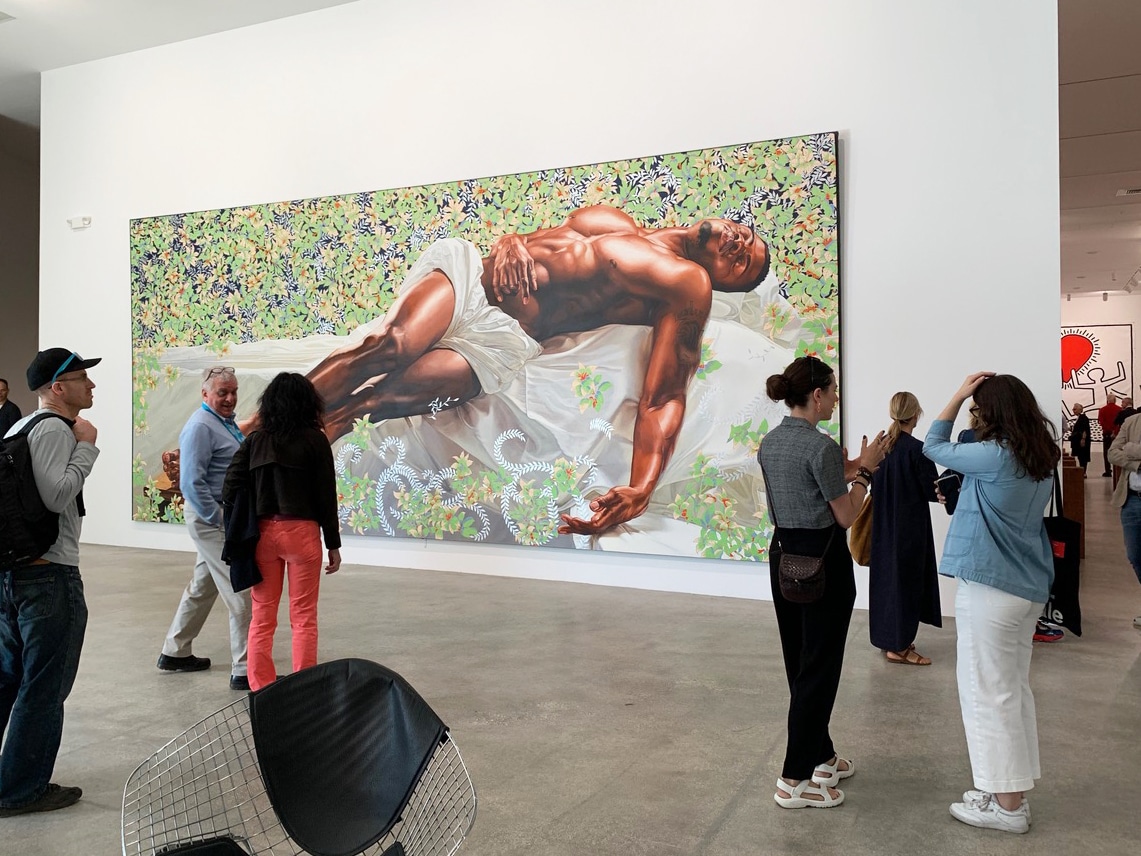
Kehinde Wiley, “Sleep”, 2018, oil on canvas.
Kehinde Wiley is a young, African-American painter who is changing the face(s) of portraiture with his sensitive, vibrant, and political portrayals of black folk, ranging from teenagers he meets on the streets to fellow contemporary artists and more. Wiley made a name for himself for his naturalistic, brightly colored portraits of young black men, often with dramatic flowery backgrounds. With black masculinity often framed as synonymous with fear and violence in the USA, his generous and vibrant portraits challenge viewers’ preconceptions of their subjects and bring young men, and people, of color into the galleries and museums they are so woefully underrepresented in.
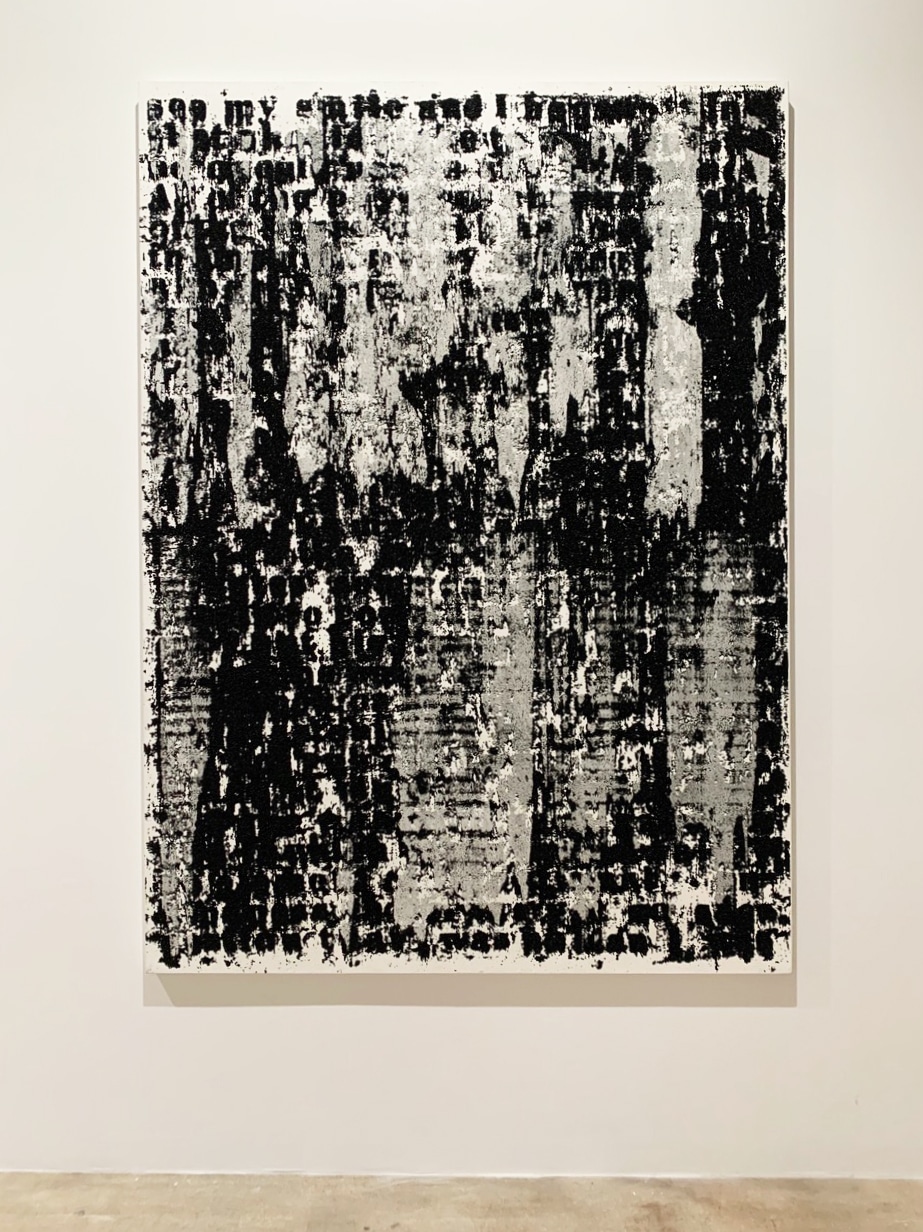
Glenn Ligon, “Mirror #7”, 2006, acrylic, coal dust, screen print, gesso, and oil stick on canvas.
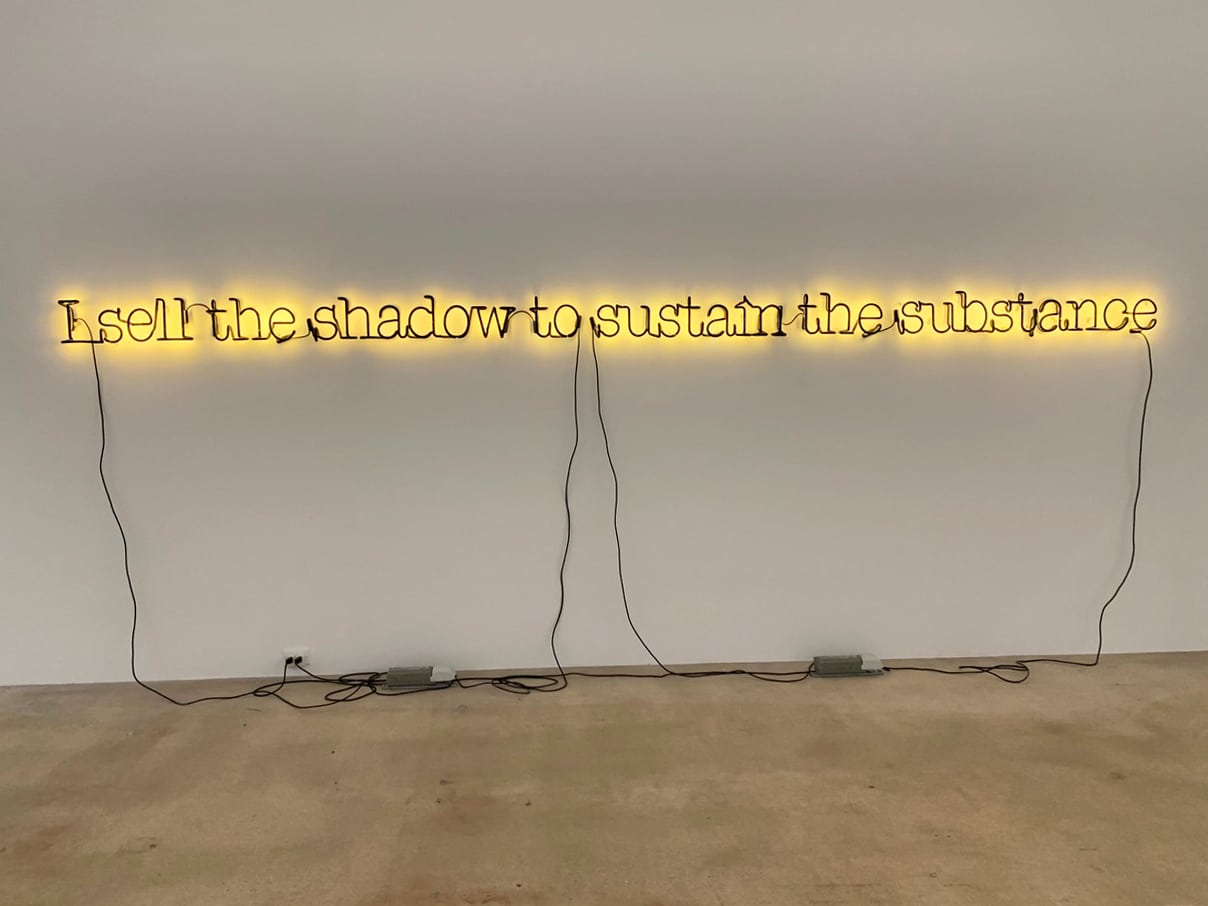
Glenn Ligon, “Untitled (I Sell the Shadow to Sustain the Substance)”, 2006, neon and paint.
Ligon often explores ideas of sexuality, violence, and racial identity within American history through the intertextuality between literature and visual arts, sourcing material from both historical and invented texts. He frequently appropriates text from well-known writers such as Zora Neale Hurston, Ralph Ellison, Gertrude Stein, and Walt Whitman to tell visual stories of ambiguous and unsettling nature. The artist’s signature hand-stenciled paintings and neon art sculptures, often portray a series of phrases that, when exhibited, prompts the viewer to read them in a new way.
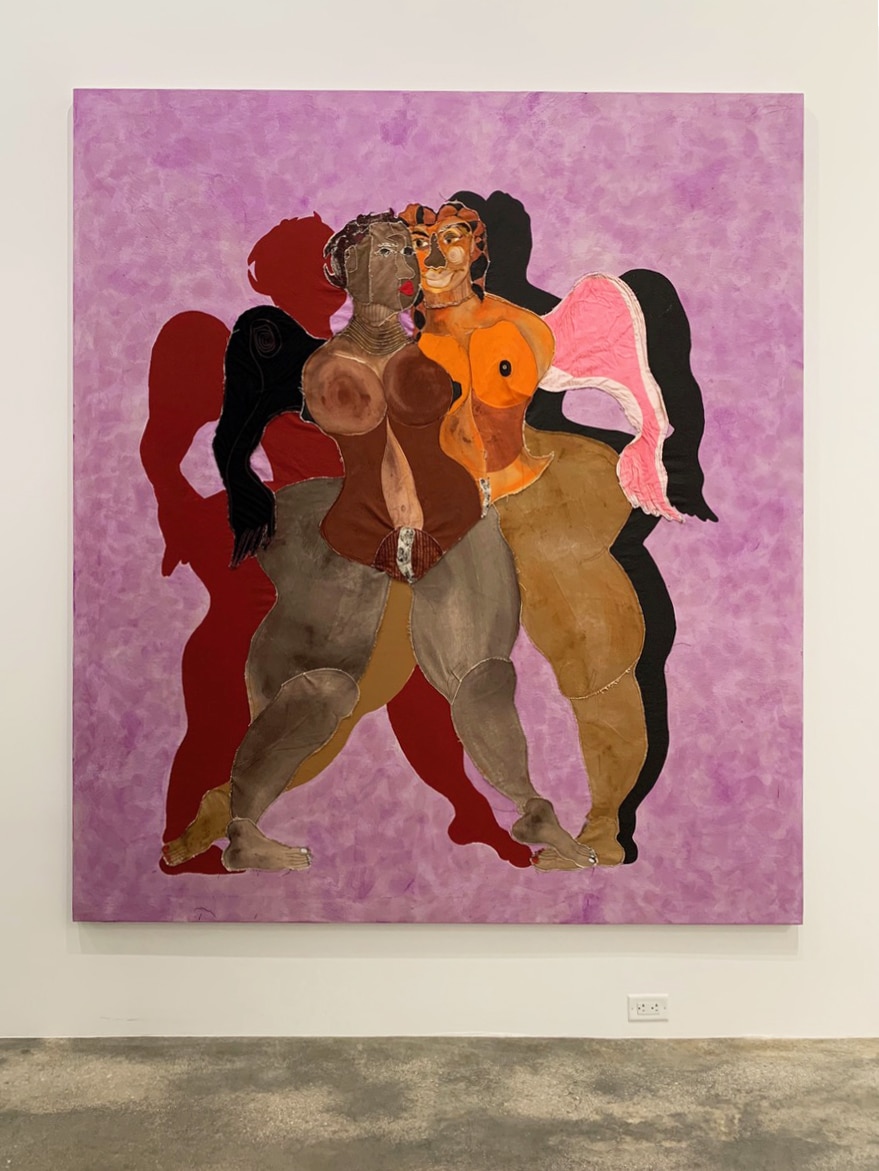
Tschabalala Self, “Two Girls”, 2019, fabric, painted canvas and, acrylic on canvas.
Self creates large patchworks combining painting, swatches of fabric, and canvas to create dynamic figures and the spaces they inhabit. The use of textiles relates to her mother’s collection of fabrics and is a crucial part of Self’s artistic process. The figures are characters modeled after the artist herself and she examines the black female body and subverts the stereotypes and sexual fantasies attached to it. Rarely is the black female body given any agency or allowed a point of view and Self considers the ways that she and her subjects are understood from outside perspectives. Even when the subjects are presented in sexualized poses, they refuse to be objectified, and stare back directly at their audience, challenging the viewer to see them on their own terms.
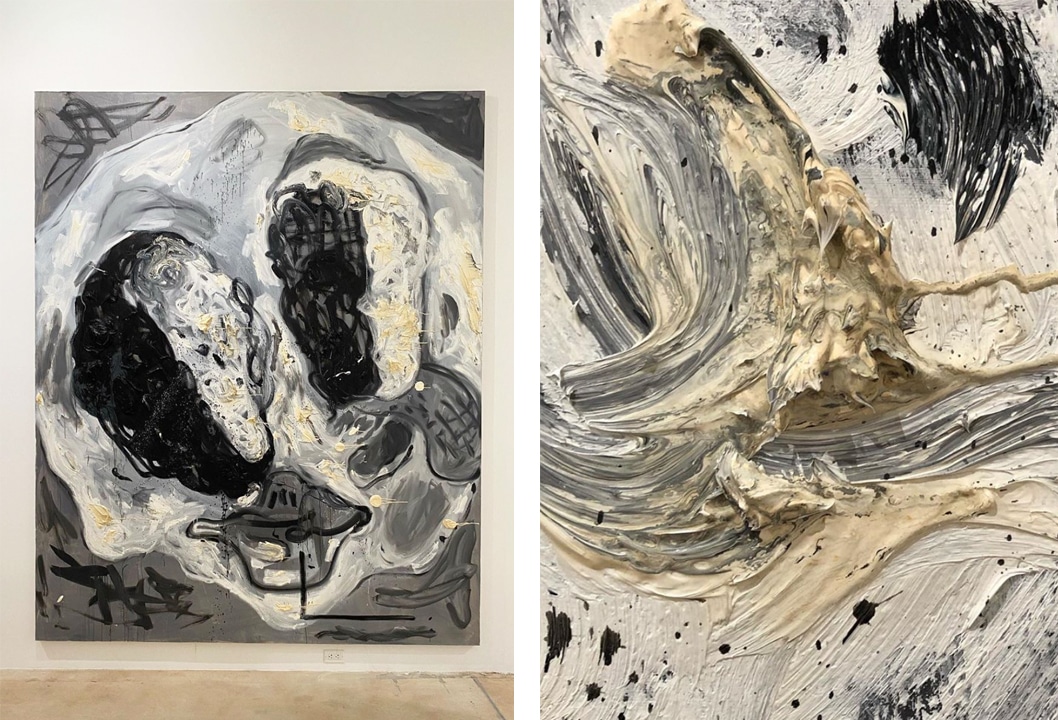
André Butzer, “Friedens-Siemens XX [Happiness-Siemens XX]”, 2007, oil on canvas.
André Butzer is a contemporary German artist known for his large-scale Neo-Expressionist works on canvases covered with thickly-applied paint. Butzer’s oeuvre represents a highly articulate style, somewhere between abstraction and figuration.
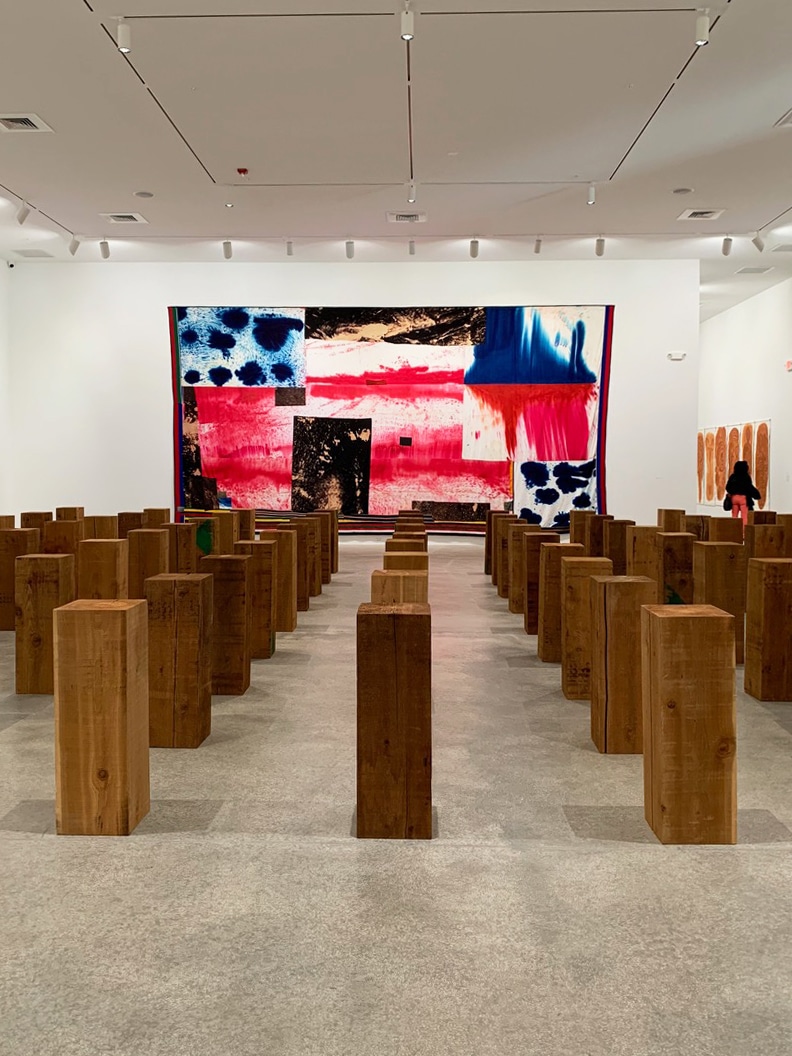
(tapestry) Sterling Ruby, “Sterling Ruby FLAG (4791)”, 2014 and (installation) Carl Andre, “Llano Estacado, Dallas, Texas”, 1979.
Possessed of a profound material sensibility, Sterling Ruby’s art speaks in a language inspired by sub-cultural phenomena ranging from graffiti, urban gangs, and prison systems, to craft and the history of quilt-making. Ruby explores themes related to American domesticity, gender relations, and quilting. Measuring up to twenty-two feet in length, these gargantuan dyed backdrops are reminiscent of the American flag. In order to explore the masculine and the feminine in relation to traditional fibre arts and their imperatives, Ruby strips these tapestries of their utilitarian value as hand-crafted domestic objects and transforms them into monumental relics.
Minimalist sculptor Carl Andre, is known for abstract work made of repetitive blocks, bricks, and metal plates arranged directly on the floor. Andre constructs his works out of industrial materials that call attention to the inherent physical structure of the piece and to the architecture of the surrounding space. Refraining from metaphor and symbolism, Andre’s work operates as a set of purely physical and perceptual concerns.
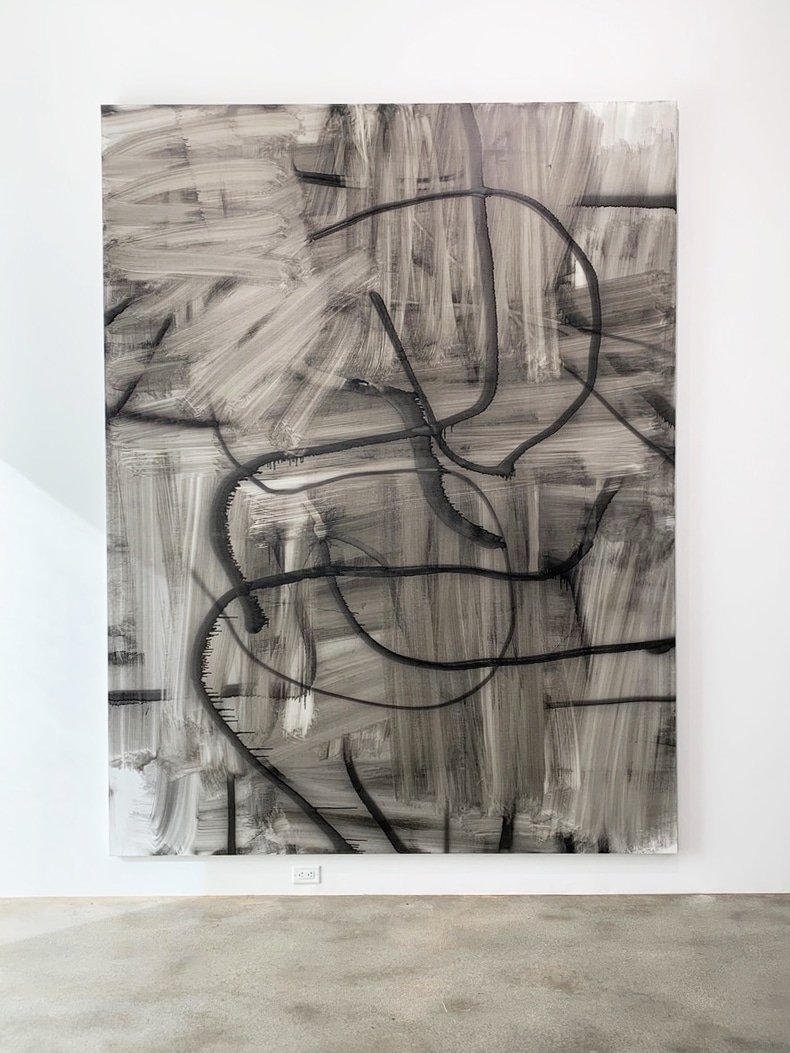
Christopher Wool, “Untitled”, 2007, enamel on linen.
Wool is an influential post-Conceptual artist, best known for his graphic, black and white paintings. Wool’s work often combines human and machine marks, as in his paintings in which he smudges black lines drawn with a spray gun into gray fields. He uses hand rollers to apply paint as a means of removing the painterly qualities from his work and he provides tension between painting and erasing, gesture and removal, depth and flatness.
Off-Site Exhibition
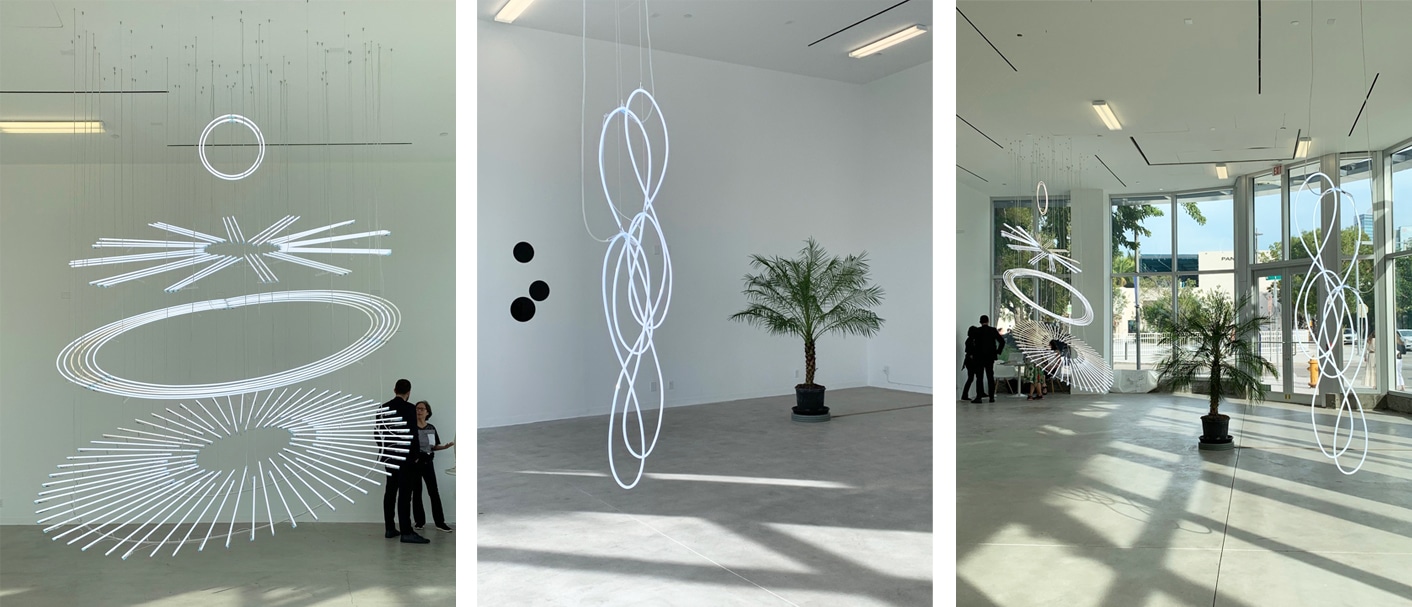
Cerith Wyn Evans off-site exhibit at White Cube.
Cerith Wyn Evans’s artistic practice focuses on how ideas can be communicated through form. His poetic work has a highly refined aesthetic, deeply informed by film, music, literature and philosophy. In his neon text sculptures, he uses favorite passages of text or the subtitles from films to create open-ended, powerful sculptures that create a retinal after-image in the viewer’s mind, long after their initial encounter.
